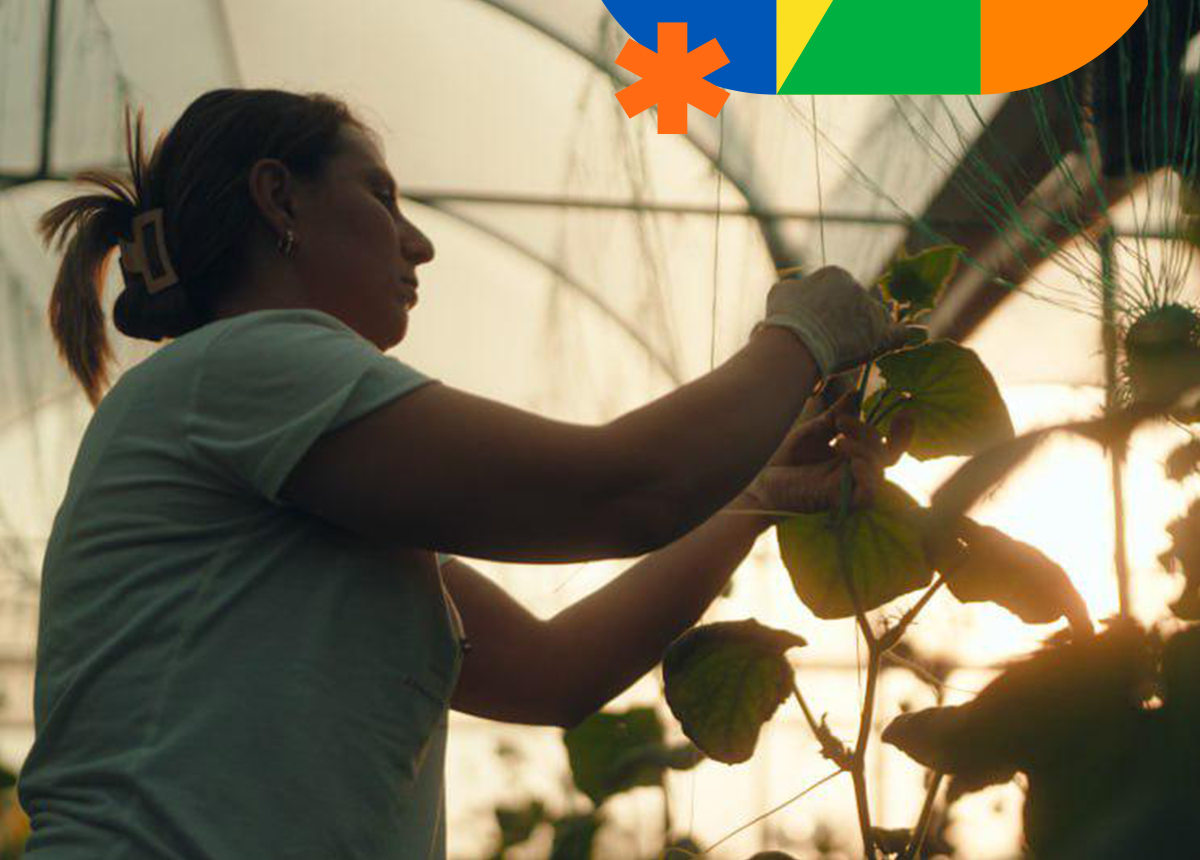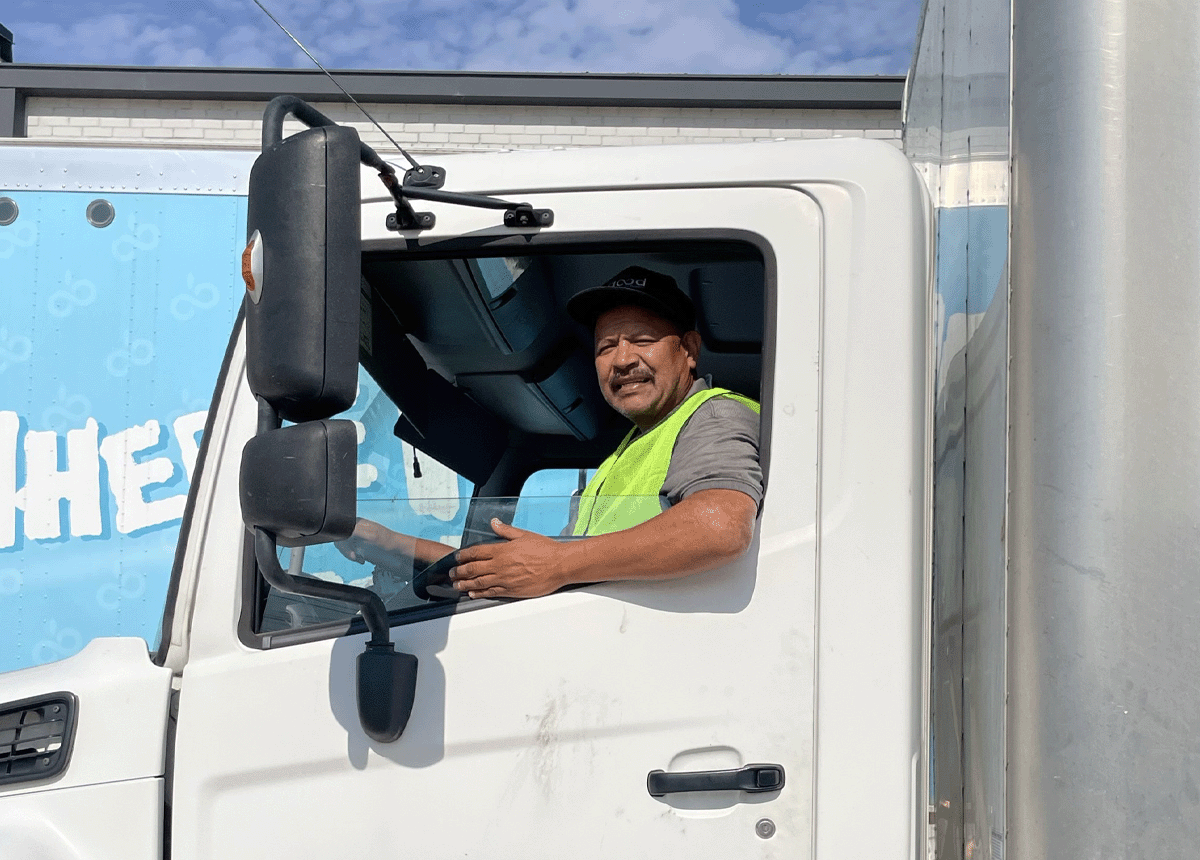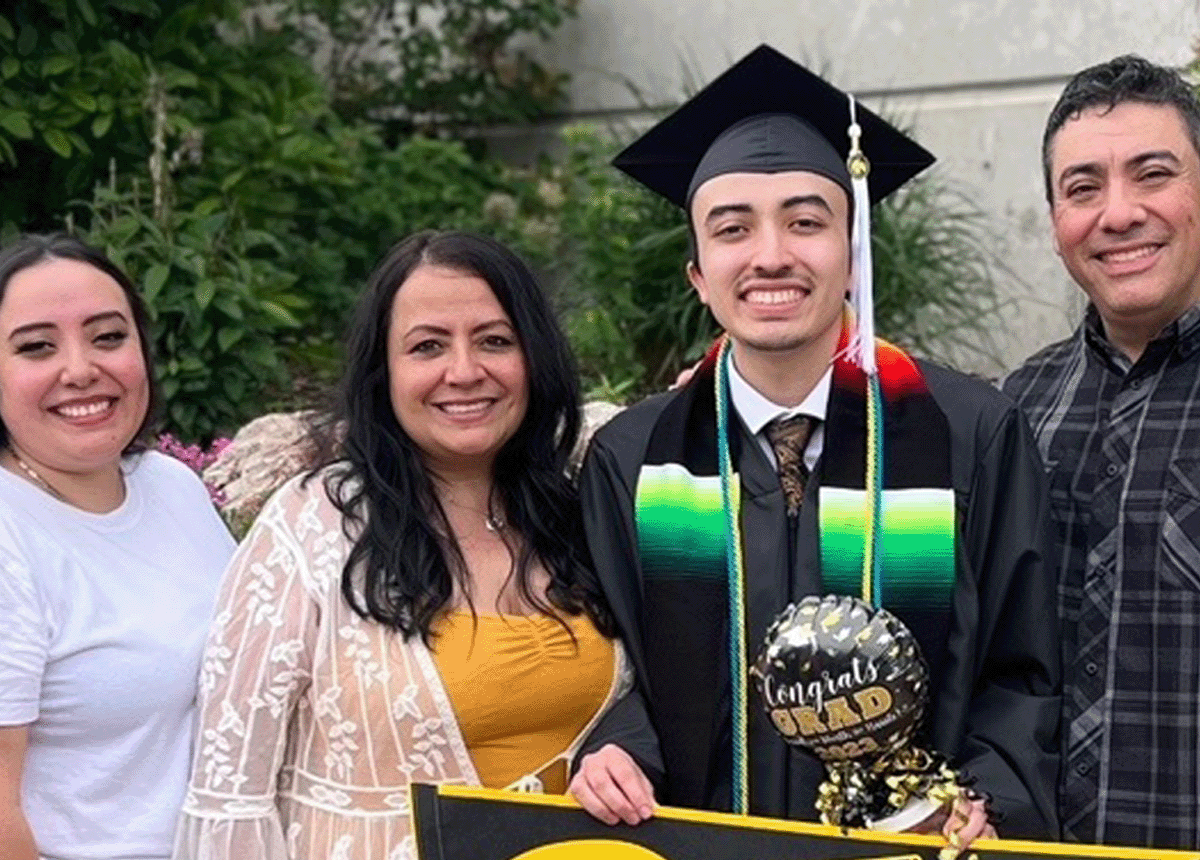Our business is only as strong and sustainable as our value chain
Our value chain is extensive and complex, with operations beyond our own spanning the globe to source, make, move and deliver our foods and drinks to customers and consumers.
Guided by pep+, we’re working to integrate more sustainable and inclusive solutions into different areas of our value chain. From how we strive to reduce the impacts of climate change, to how we aim to improve access to nutritious foods and beverages, these changes are not only good for our company but also encourage positive change for the business partners, people and communities that touch our value chain.
Specifically, we’re taking action to help:
- Mitigate our climate-related impacts and adapt our business to the realities of climate change
- Replenish high water-risk watersheds and reduce operational water use
- Innovate more sustainable packaging and minimize waste
- Provide opportunities for our employees and communities by supporting sustainable food systems, inclusive workforce development and improved nutrition and safe water access.
In 2024, we continued advancing our pep+ ambitions across our Positive Value Chain pillar by identifying areas where we believe we can have the greatest long-term impact. In May 2025, we announced evolved pep+ Value Chain goals for climate, water, agriculture and packaging, further outlined in this report. See Positive Agriculture for detail on our evolved agriculture goals.
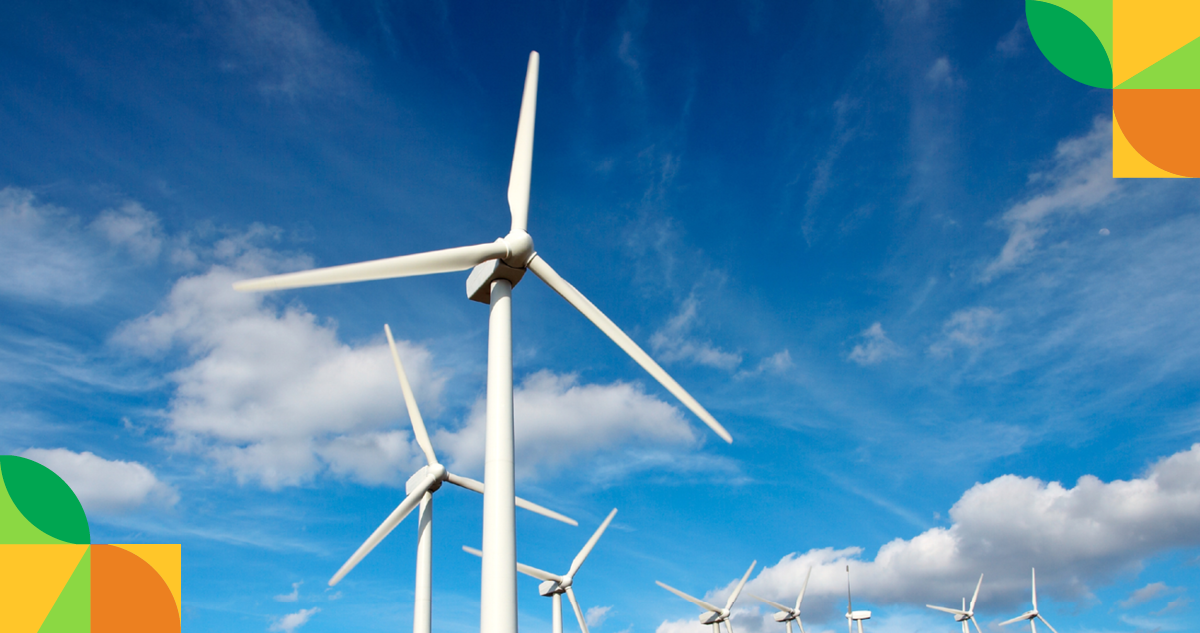
Climate
For our business, climate change has the potential to impact the quantity and quality of agricultural crops available for our foods and drinks, create weather patterns that hinder the operation of our facilities and value chain and affect the availability and quality of the water we use. For our people, suppliers and the communities where we operate, climate change has the potential to threaten their prosperity and could negatively impact their health and well-being through food insecurity and exposure to extreme weather.
For these reasons, we are focused on implementing strategies that seek to mitigate and adapt to the effects of climate change.
We aim to achieve net-zero emissions by 2050 or sooner, and our targets have been officially validated by the SBTi. In our path to net-zero, we also aim to achieve by 2030:
- A 50% reduction in Scope 1 and 2 emissions;1
- A 30% reduction in Scope 3 Forest, Land and Agriculture (FLAG) emissions;2 and
- A 42% reduction in Scope 3 Energy and Industry (E&I) emissions.3
All 2030 climate goals are measured against a 2022 baseline. These goals reflect SBTi’s sectoral guidance on FLAG and E&I emissions and are aligned to a 1.5oC trajectory by 2050. These ambitions are outlined in our Climate Transition Plan, first published in May 2025.
1. Goal tracks Scope 1 and 2 emissions consistent with the Greenhouse Gas Protocol. See Calculation Methodology for details
2. Goal tracks Scope 3 emissions based on purchased goods emissions consistent with the Greenhouse Gas Protocol's draft Land Sector and Removals Guidance and Standard and the Science Based Target Initiative's Forest, Land and Agriculture (FLAG) Guidance. See Calculation Methodology for details on how these emissions are calculated and categories included in scope of this goal
3. Refined goal (including 2022 baseline) announced on May 22, 2025. Past performance against the baseline calculated retroactively. For more information, see Calculation Methodology
Approach
Our strategy is supported by our Climate Transition Plan (CTP), which outlines in detail the actions we believe will enable us to meet our climate mitigation ambitions, including in:
- Direct operations: We are taking action in an effort to reduce our emissions in many of our company-owned and -controlled operations across the world.
- Value chain: Outside our direct control, we strive to help reduce climate impact in our value chain, prioritizing decarbonization in agricultural sourcing, packaging and third-party transportation and distribution.
- Wider society: We believe that effectively addressing climate change requires coordinated and collective action. We seek to work beyond our operations to promote actions that support progress.
Our progress toward these ambitions relies on the wider systems in which we operate. Efforts such as collaborations within our value chain, working to align with industry standards, advocating for supportive government policies and understanding the views of diverse stakeholders will influence the progress we are able to make in working towards our targets.
Our Net-zero Ambition by 2050
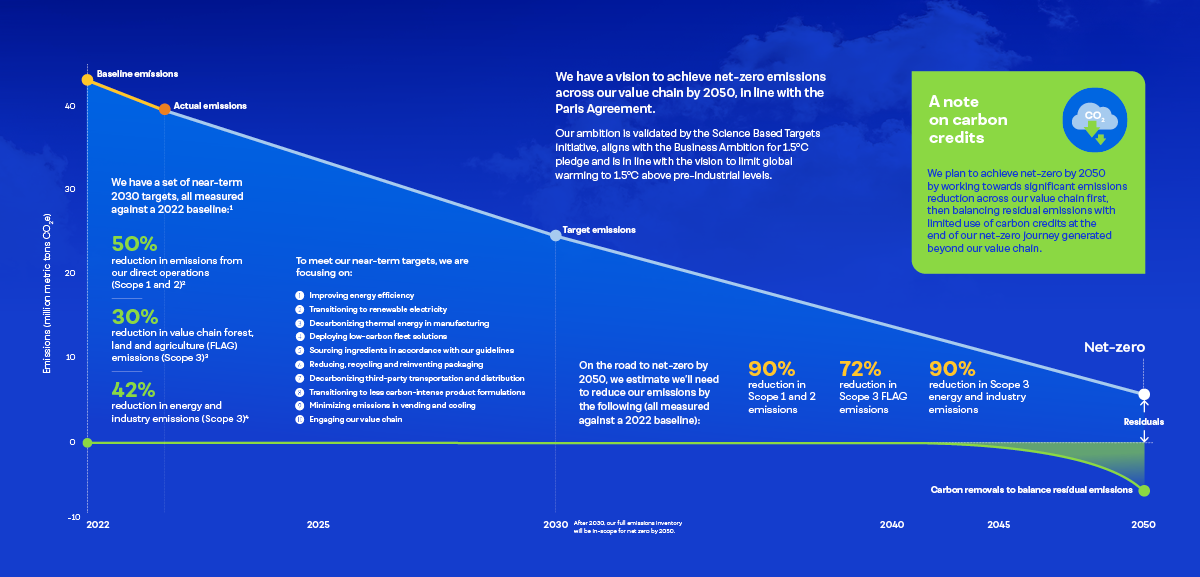
Decarbonizing our value chain is a complex effort requiring a multi-pronged approach that leverages multiple options as we work to achieve our goals. We know that our efforts do not occur in a vacuum — they rely on the development of the wider systems in which we operate. Key areas, such as modernization of electrical grids and development of affordable renewable fuel supplies, will influence our progress as we work towards decarbonization. We have learned a lot as we have tested different technologies to decarbonize and plan to continue to implement scalable solutions that are available today, while also investing in new promising technologies. These solutions may hold the potential to be replicated at PepsiCo facilities around the world and serve as building blocks to scale decarbonization beyond our company walls. However, making progress against our climate goals will take pursuing multiple initiatives across different areas of our value chain while collaborating with our suppliers, peers and other industry members.
In 2024, we:
- Continued to expand our electric fleet in North America with the addition of 50 Class 8 Tesla semi-trucks and 75 Ford E-Transit electric vans serving PepsiCo's manufacturing and distribution facility in Fresno, California.
- Upgraded to new, lower-carbon technologies in our beverage plant in Álava, Spain. This included installing new hot water pipelines and changing the electric transformers to assume the power demands to operate completely on electricity.
- Joined a Virtual Power Purchase Agreement alongside the Donaldson Company that will result in the creation of a solar energy project in Texas, expected to be completed by the end of 2025.
- Piloted long-haul electric truck operations along route I-10 in Texas, aiming to reduce fleet emissions and accelerate the transition to sustainable logistics through our involvement with the Sustainable Freight Buyers’ Alliance (SFBA).

39
countries in our operations used
100% renewable electricity in 20241

~80%
compressed natural gas for our North
American foods fleet was renewable in 2024
1. 100% renewable electricity includes energy attribute certificates
Addressing climate change in the value chain
Like many large, global organizations, reducing Scope 3 emissions is the biggest challenge we face in advancing progress toward our 2050 net-zero goal. Given the indirect nature of these emissions, quantifying and managing them is difficult and requires strategic partnerships and broad engagement to make progress.
We try to work with our value chain, including suppliers, contract manufacturers, franchise bottlers and customers, to support their efforts to improve the sustainability of their operations.
We believe expectations, economics and enablement are three fundamental elements needed to drive successful engagement and action:
Expectations
Setting clear and consistent expectations with our suppliers helps lay the foundation for successful collective action. Aligning supplier performance with the "4 Asks" clearly demonstrates their sustainability commitments. As suppliers meet or exceed these criteria, they climb our Leader Ladder, showcasing their value as indispensable partners in achieving business excellence. We created this framework for our top GHG emitting suppliers (who account for 80% of our emissions in the agricultural ingredient and packaging categories of our Scope 3 emissions) to help better understand how we can lean in and support each other on our sustainability journeys.
When we launched this effort in 2023, 21% of suppliers were in the Initiating phase of their sustainability journey and 15% were already in the Accelerating phase. In 2024, suppliers continued to advance progress with 10% in the first stage of the journey and 18% achieving Leader status position of the Leader Ladder.
The four asks of suppliers are:
- Commit and set a Science-Based Target (SBT)
- Share their SBT-aligned decarbonization plan and annual progress
- Report their Scope 1 and 2 emissions and where they are taking action
- Collaborate with PepsiCo to roll-out regenerative agriculture practices (specific to our agricultural suppliers)
Economics
We strive to identify opportunities to remove barriers to pursuing decarbonization for our suppliers. For example, in 2024, we launched the Climate Collaboration Group (CCG) which brings together 18 of PepsiCo’s leading suppliers on climate action. The purpose of the group is to identify shared climate issues where collaboration could be a significant financial unlock and speed transformation.
Enablement
PepsiCo has a long history of working together with stakeholders to advance shared sustainability goals.
In 2024, we introduced our pep+ Partners for Tomorrow global Sustainability Action Center to a broader range of participants within our value chain, including suppliers, contract manufacturers and bottlers. The content is available in eight languages and can be accessed via a public website that also serves as a collaborative platform that helps partners stay up to date on pep+ ambitions, track participants’ status versus the goals, measure how their progress compares to peers and provides them with a personalized pep+ dashboard. In addition, it provides resources such as playbooks and programs to further support participants on their decarbonization journey.
We also aspire to work closely with farmers and others within our supply chain to scale regenerative agriculture practices as we aim to reduce carbon emissions.
Progress against climate goals
In May 2025, we refined our climate goals as part of a broader effort to refocus our sustainability ambitions where we believe we can help drive scale and position the company for long-term growth. Our 2024 ESG reporting suite, which includes this Summary and the ESG Topics A-Z page, represents the first time we are reporting progress against the evolved goals.
In 2024, 89% (approximately 3,900 GWh) of the company’s direct global electricity needs were met with renewable electricity, including through use of power purchase agreements (PPAs) and purchase of unbundled energy attribute certificates (EACs).1
Details on our 2022 baseline emissions footprint can be found in our Climate Transition Plan with performance against climate goals noted below.
1. EACs are known as renewable energy certificates (RECs) in the U.S.
Progress against 2030 Scope 1 and 2 emissions reduction goal
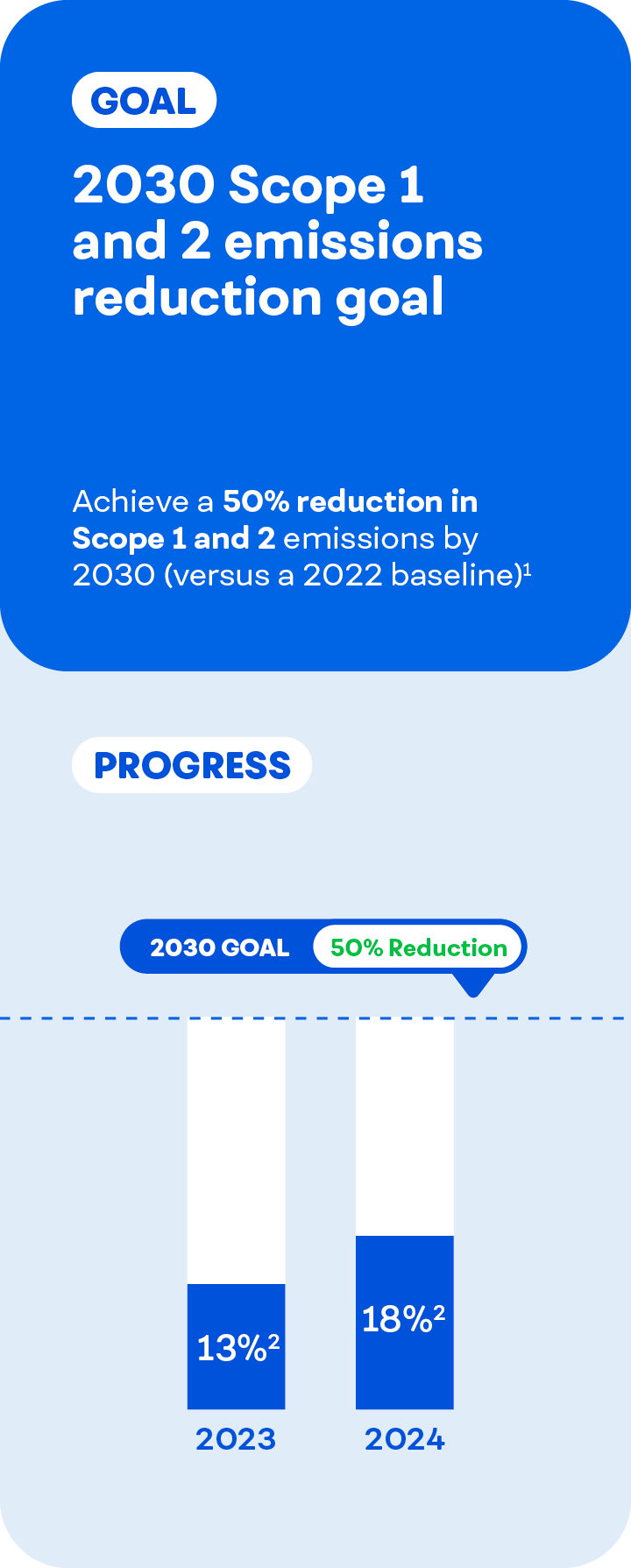
Progress against 2030 Scope 3 Energy and Industry (E&I) emissions reduction goal
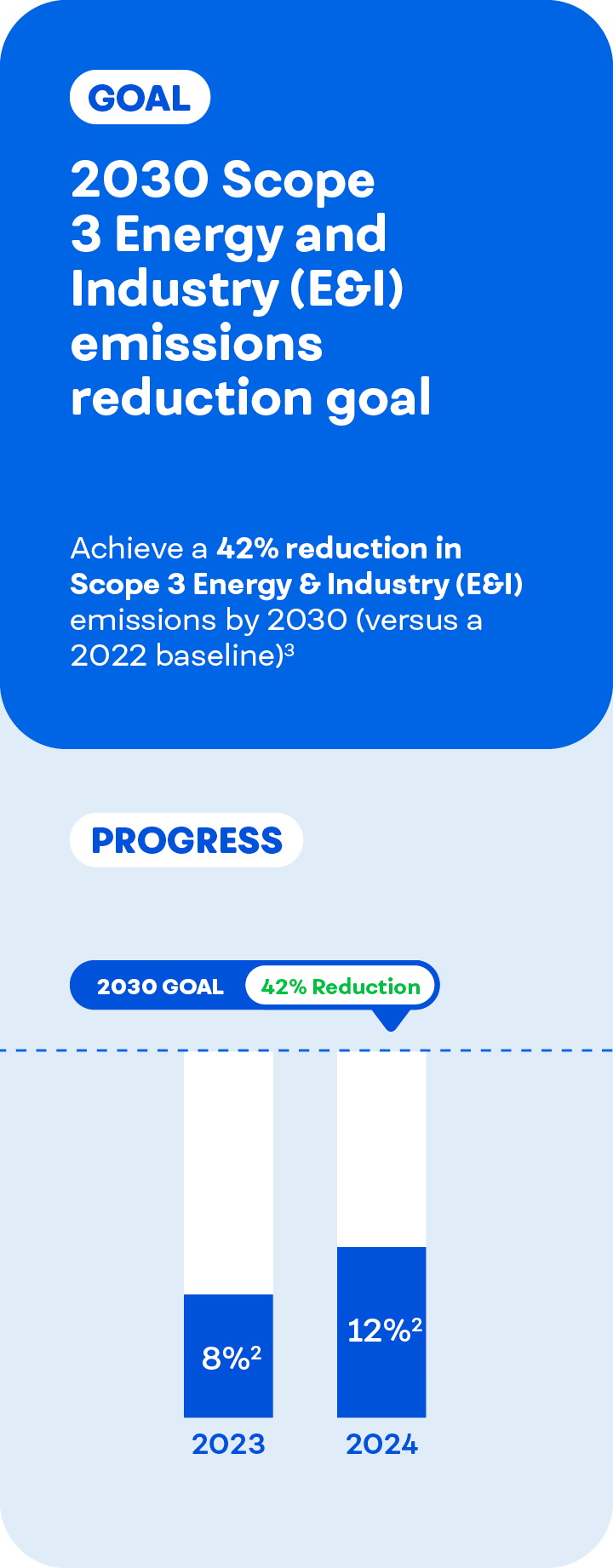
Progress against 2030 Scope 3 Forest, Land and Agriculture (FLAG) emissions reduction goal

Progress against renewable electricity in company-owned operations goal
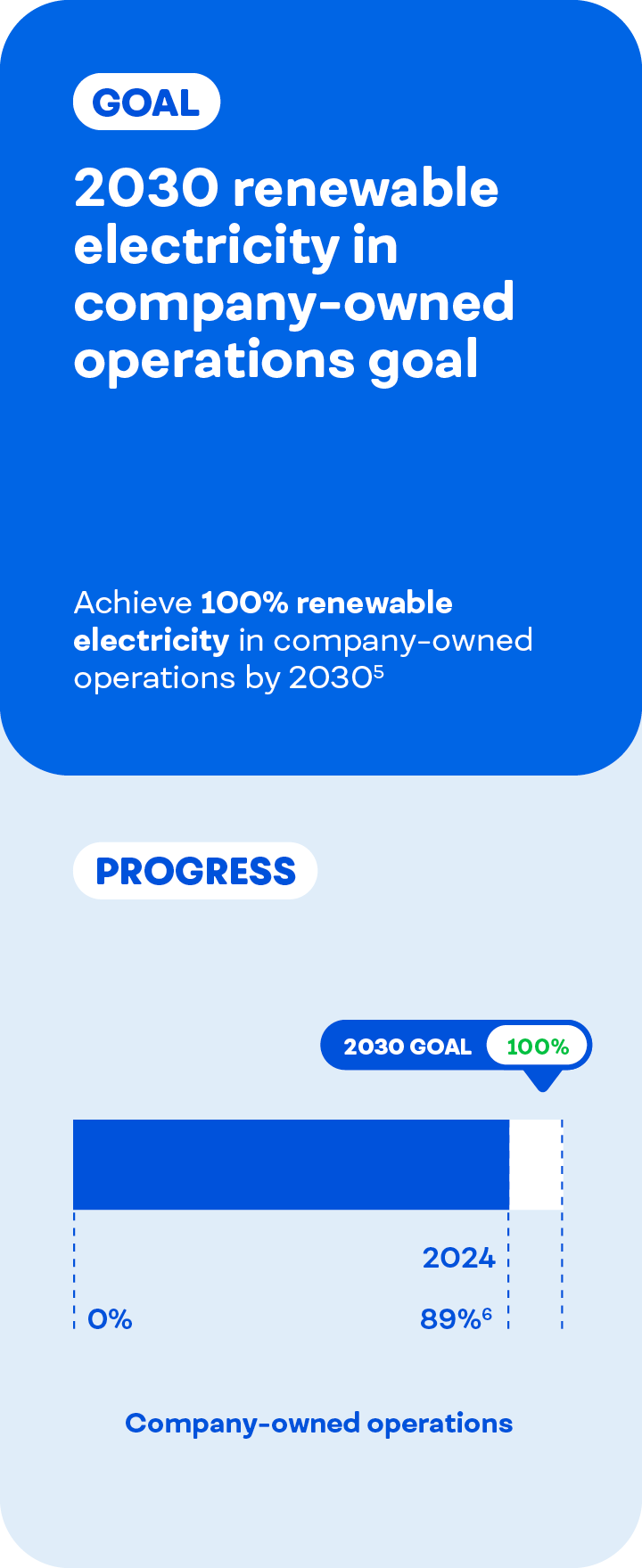
1. Goal tracks Scope 1 and 2 emissions consistent with the Greenhouse Gas Protocol. See Calculation Methodology for details
2. Refined goal (including 2022 baseline) announced on May 22, 2025. Past performance against the baseline calculated retroactively. For more information, see Calculation Methodology
3. Goal tracks energy- and industry-related Scope 3 emissions consistent with the Greenhouse Gas Protocol's Scope 3 Standard and the Science Based Target Initiative’s Corporate Net-Zero Standard V1.2. See Calculation Methodology for details on how these emissions are calculated and categories included in scope of this goal
4. Goal tracks Scope 3 emissions based on purchased goods emissions consistent with the Greenhouse Gas Protocol's draft Land Sector and Removals Guidance and Standard and the Science Based Target Initiative's Forest, Land and Agriculture (FLAG) Guidance. See Calculation Methodology for details on how these emissions are calculated and categories included in scope of this goal
5. In working to achieve this goal, PepsiCo uses a diversified portfolio of solutions, including purchase of unbundled energy attribute certificates
6. Former ambition became a pep+ goal in 2025. 2024 performance calculated retroactively. For more information, see Calculation Methodology
Explore Climate topics in more depth
PepsiCo's ESG Topics A-Z provides detail on strategy, data, policy, progress and more on a wide range of subjects.
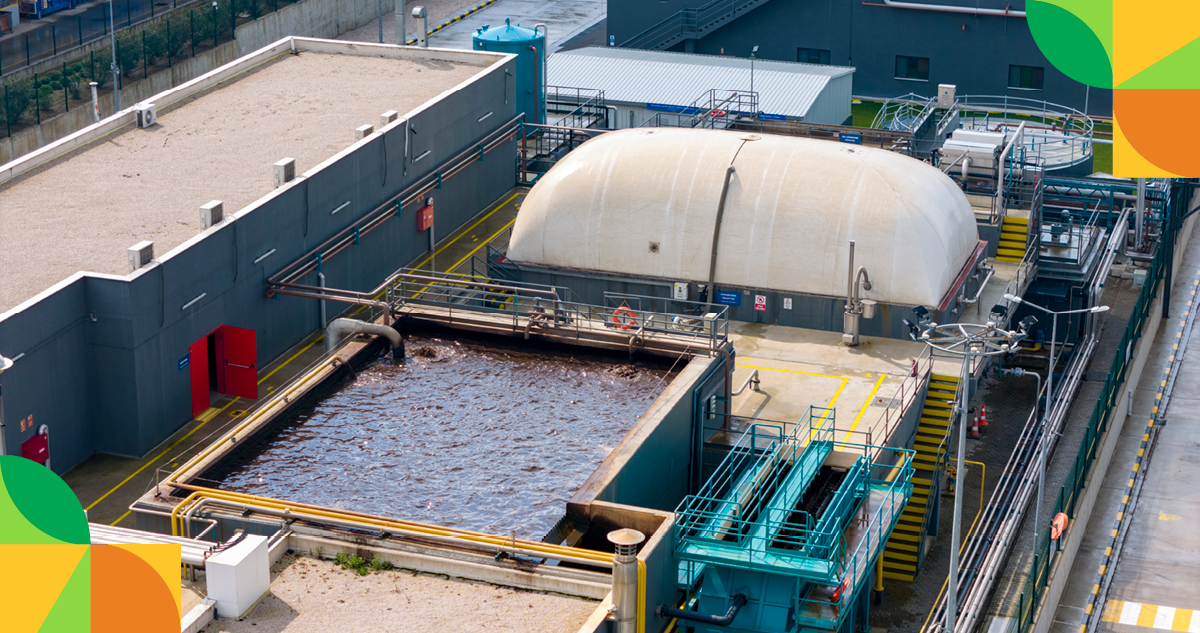
Water
Water is a human right, indispensable to every community, ecosystem and economy. It’s also a critical resource to PepsiCo’s business: it irrigates the crops we use, is an ingredient in many of our foods and drinks and is essential to ensuring we meet the highest product safety and quality standards.
However, water insecurity is a significant global challenge. With climate change and other factors placing a heightened burden on the global water supply, companies like ours can contribute their expertise and resources to try to help address these issues.
That’s why we’re aiming to become net water positive and working to replenish more water that we use in areas of high water risk by 2030.
We’ve set high standards for ourselves and our supply chain in support of this vision, including enhancing watershed management within our operations and across our agricultural practices, and contributing to broader community water health.
Approach
As one of the first companies of our size to acknowledge access to water as a human right, we take our vision of becoming net water positive seriously. The foundation of our net water positive vision is an effort to work towards improving water resources in high water-risk areas where we operate.1 Progress toward this vision relies not only on our own operations, but on water stewardship at franchise bottler manufacturing facilities.
In pursuit of our vision to become net water positive, we have adopted an approach to watershed management that includes efforts to:
- Improve water-use efficiency in manufacturing facilities;
- Replenish water and improve the health of the local watersheds that are at highest water risk where we source crops and where we operate; and
- Increase safe water access for communities that face water insecurity, including scarcity and unsafe water sources.
Our path to net water positive
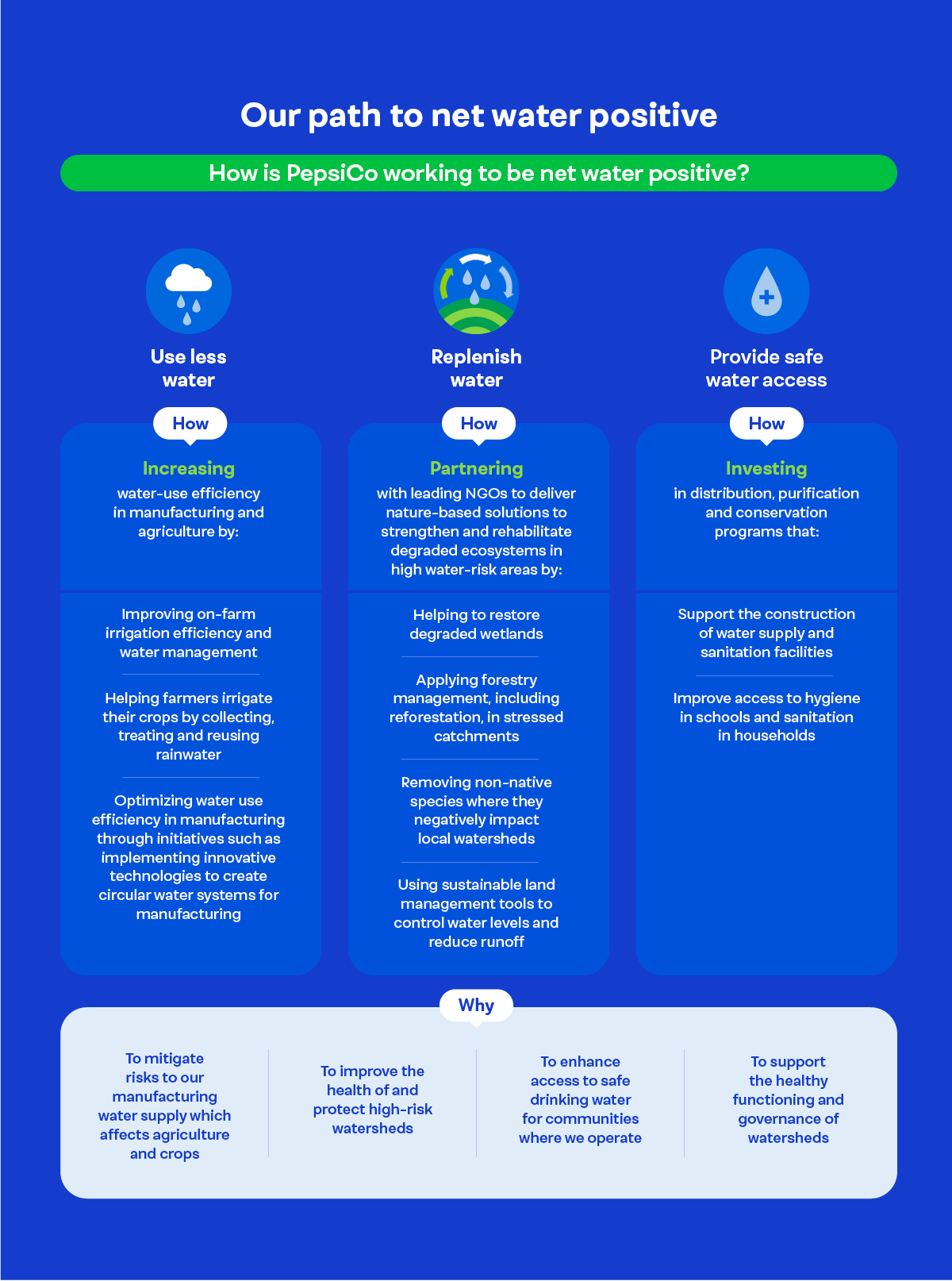
Within our operations, we’re focused on water-use efficiency
To continue making our operations more water-efficient, we’re focused on scaling proven manufacturing processes and treatment technologies, and fostering a culture of water sustainability among our employees.
By innovating and scaling solutions globally, we met our 2025 water targets (to achieve a 25% improvement in water-use efficiency in high-risk areas and to improve water-use efficiency by 15% as part of our broader goal to advocate for and contribute to a measurable improvement in the health of high water-risk watersheds where we directly source our crops) two years early. In 2024, we continued this momentum, expanding and refining these solutions to deepen impact, including:
- Ingredient water capture: Since 2021, PepsiCo has been pioneering technology to capture the water in potatoes during the frying stage of chip production. We recover and treat to safe drinking standards the fryer vapor condensate from potato chip operations instead of letting it evaporate off as steam. In 2024 at our Pune, India foods site, we piloted a newer, more efficient edition of this technology. Using an air cooled heat exchanger instead of a conventional water cooled system, we optimized the fryer vapor, heat and condensate recovery without the need for cooling water.
- Water efficient potato chip processing: We expanded the use of new washing technologies at convenient foods factories in the U.S. in 2024. Two new tools, used in the peeling and slicing stages of processing potatoes, help us reduce the amount of freshwater needed by up to 30 percent.
We also continue to expand our Resource Conservation (ReCon) program across PepsiCo facilities. The program helps employees identify low- or no-cost opportunities for energy and water savings at our manufacturing sites. 2,000 people were trained and 25 site ReCon Deep Dives were completed across the PepsiCo manufacturing network during 2024.
As a longstanding member of the Alliance for Water Stewardship (AWS), we set one of our pep+ water goals to adopt the AWS Standard in high water-risk manufacturing facilities by 2025. The number of facilities that have fully adopted the AWS Standard nearly tripled year over year from 27 in 2023 to 73 in 2024.
Achieve 100% water replenishment at company-owned facilities designated in high water-risk areas by 20252
We must understand the conditions, challenges and risks of local watersheds to help improve the availability and quality of water in the communities in which we operate. To do so, we support collaborative solutions that address the specific needs of local watersheds and partner closely with farmers, landowners, state and federal agencies and NGOs.
In 2024, we invested $3.6 million into new water replenishment projects across 9 countries, bringing the total number of active water replenishment projects to 48. Combined, these projects replenished approximately 24 billion liters of water back into local watersheds. For detail on how we calculate the goal, please see our Calculation Methodology. Examples of 2024 projects include:
- Stormwater Retention Ponds Project with The Nature Conservancy in the Florida Everglades: This project aims to improve stormwater pond performance in the Florida Everglades watershed by retrofitting ponds with sensors, weather forecasting and adaptive controls to enhance and improve water quality, help mitigate floods and restore more natural flows.
- Mokelumne River Watershed Project – Sacramento-San Joaquin River watershed in California: In partnership with Blue Forest, the World Resources Institute and the Upper Mokelumne River Watershed Authority, this project focuses on restoring forest structure, composition and function in over 2,000 acres of the Mokelumne Basin, part of the greater Sacramento-San Joaquin River system in Sacramento, California.
- Using native plants in Andalusia, Spain to help replenish the Segura River: We are working with local stakeholders near the plant where we produce Alvalle Gazpacho to replenish the Segura River by replacing water-intensive invasive species with native plants adapted to the water availability of the region.
1. High water-risk facilities are identified as part of PepsiCo’s triennial water risk assessment process which integrates third-party data (e.g., World Resource Institute’s (WRI) Aqueduct tool; World Wide Fund for Nature (WWF) Water Risk Filter tool) and subject matter expertise alongside site-specific data to determine and quantify the level of physical (quantity and quality), regulatory and reputational water risk. More information on how we assess water-risk can be found on the Water page of ESG A-Z Topics.
2. Contract manufacturers and co-packers are excluded. Our progress toward this goal relies in part on water-use efficiency at high water-risk franchise bottler manufacturing facilities. We are working to integrate their data into future calculations.
Expanding our efforts to drive positive change beyond our walls
Water stewardship has long been a priority at PepsiCo, and we’re sharing our learnings with our third-party manufacturers and others. In 2023, we launched a free, open-access online learning program on water through the learning platform Coursera. Courses include The Water Cycle, Water Security and Stewardship and Water Governance and Economics. To-date, over 730 non-PepsiCo individuals have registered for the program.
PepsiCo and the PepsiCo Foundation have also helped more than 96 million people since 2006 gain access to safe water through distribution, purification and conservation programs. In 2024, the PepsiCo Foundation invested $0.7 million in safe water access programs, and it plans to continue to expand the reach of its safe water access program by providing grants.
- The PepsiCo Foundation launched VivaOliva, a program aimed at supporting regenerative agriculture and water conservation in olive farming practices in Jaén, a region in Spain facing economic hardship.
- In 2023, PepsiCo launched a pilot program in India that aims to address water stress at a broader watershed level. Through this pilot program, we aim to work with farmers outside of our value chain to improve their knowledge on water-efficient farming practices while also working with ten local villages to develop long-term water security plans. In 2024, we engaged over 1,500 farmers in project activities and recharged over 80 million liters of water. Going forward, we plan to expand this program to additional villages, pursue additional funding and collaborate with local governments to increase reach.
Learn more about how water stewardship is integrated into our regenerative agriculture agenda, our strategic water collaborations and engagement and the strides we’re making toward our goal to deliver safe drinking water to 100 million people by 2030.

~75%
water used in company-owned sites
in high-risk watersheds replenished in 20241

~24B
liters of water replenished
to local watersheds in 2024
1. Refined 2030 goal announced on May 22, 2025. 2024 performance calculated retroactively. We continue to measure progress against our original 2025 goal and our extended 2030 goal. In addition to internal site-specific data, World Resource Institute’s Aqueduct water stress assessment tool is used to reconfirm high water-risk areas every three years. In 2022, an updated water risk assessment identified additional company-owned high water-risk facilities, which are in-scope for calculating progress against our 2030 goal only. Reported performance does not include data from franchise bottler manufacturing facilities but work is underway to obtain it for inclusion in future years. For more information, see Calculation Methodology
Goals & progress
Achieving long-term improvements to high water-risk watersheds requires scale, partnership and engagement from all stakeholders in each of our locations. And given the uniqueness of each local watershed’s ecosystem, scaling our solutions can take time and significant resources.
In May 2025, we refined certain water goals as part of a broader effort to refocus our sustainability ambitions where we believe we can help drive scale and position the company for long-term growth. Our 2024 ESG reporting suite, which includes this Summary and the ESG Topics A-Z pages, represents the first time we are reporting progress against these evolved goals.
In 2024, we made progress on our pep+ water goals:
- Replenished approximately 75%1 of the water used in our company-owned manufacturing facilities in high water-risk areas
- In total, global projects replenished approximately 24 billion liters of water.
- Completed the adoption of the AWS Standard at 73 facilities and had 28 facilities in the process of adopting at the end of 2024
- Announced the delivery of our operational water-use efficiency goal in 2023, two years ahead of schedule
1. Refined 2030 goal announced on May 22, 2025. 2024 performance calculated retroactively. We continue to measure progress against our original 2025 goal and our extended 2030 goal. In addition to internal site-specific data, World Resource Institute’s Aqueduct water stress assessment tool is used to reconfirm high water-risk areas every three years. In 2022, an updated water risk assessment identified additional company-owned high water-risk facilities, which are in-scope for calculating progress against our 2030 goal only. Reported performance does not include data from franchise bottler manufacturing facilities but work is underway to obtain it for inclusion in future years. For more information, see Calculation Methodology
2030 operational water-use efficiency high water-risk (HWR) goal

2030 local watershed replenishment goal
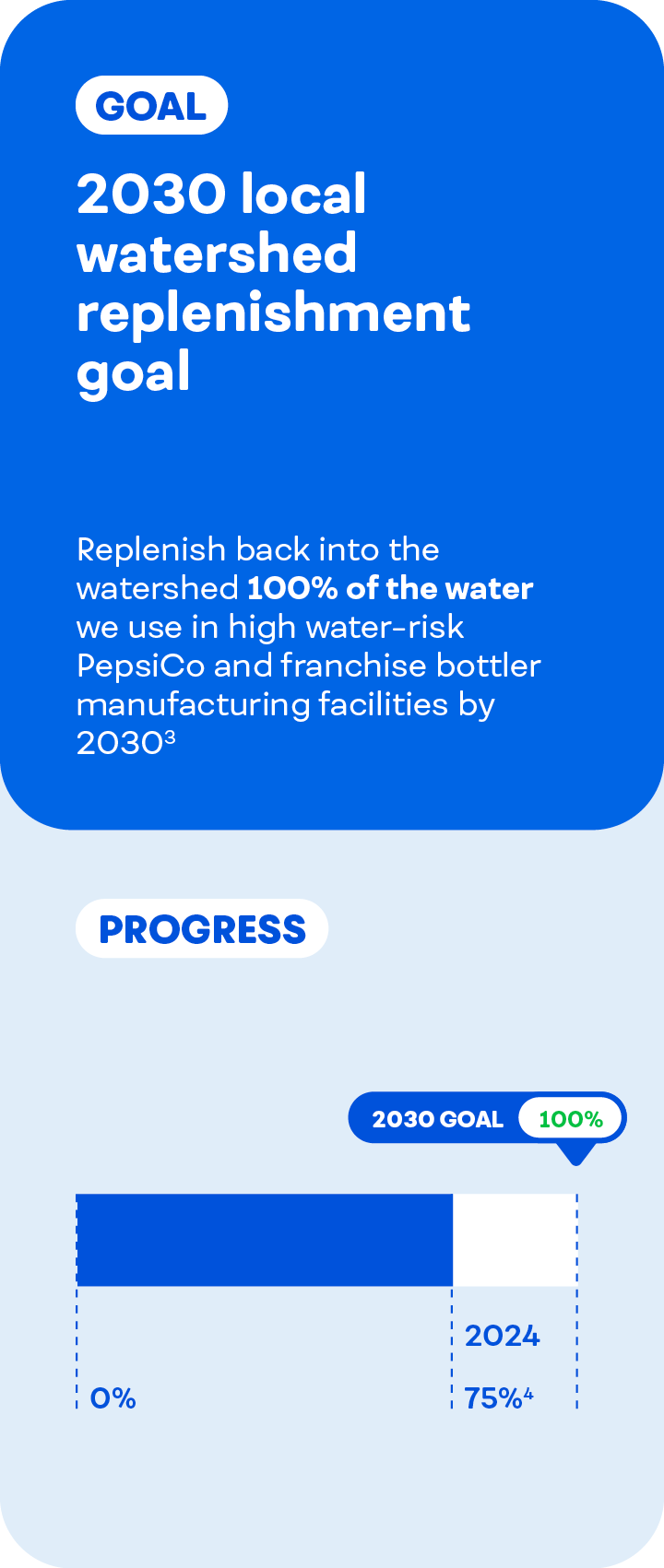
Water Stewardship Standard goal
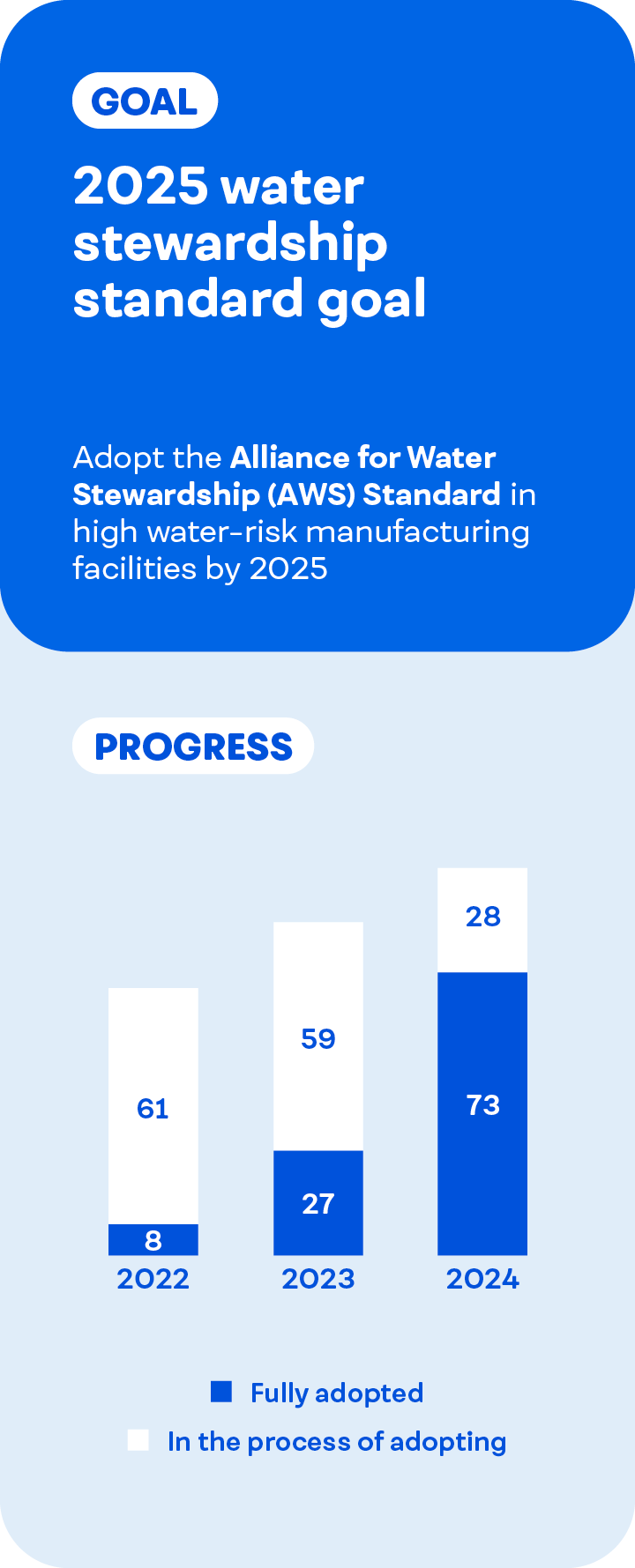
2025 local watershed replenishment goal
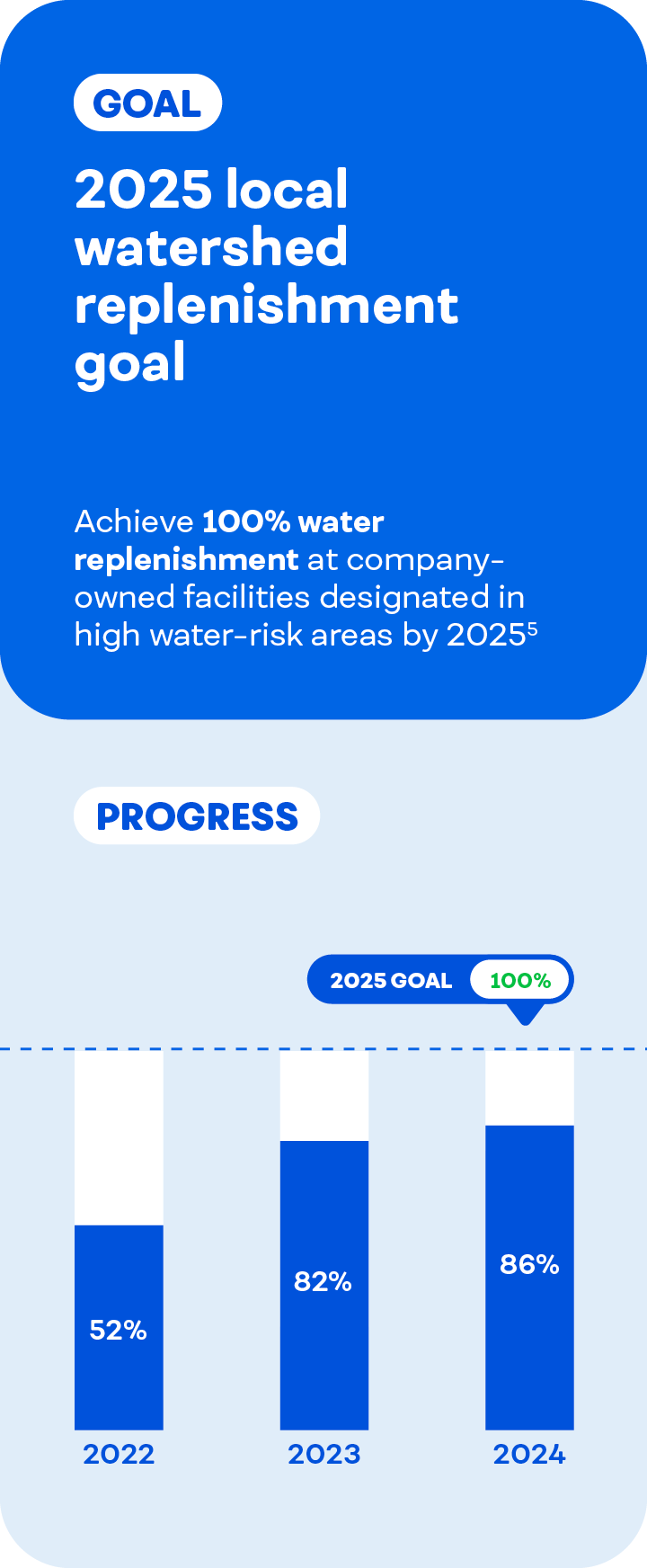
1. Contract manufacturers and co-packers are excluded. Our progress toward this goal relies in part on water-use efficiency at high water-risk franchise bottler manufacturing facilities. We are working to integrate their data into future calculations
2. Refined goal announced on May 22, 2025. 2024 performance calculated retroactively. For more information, see Calculation Methodology. Reported performance does not include data from franchise bottler manufacturing facilities but work is underway to obtain it for inclusion in future years
3. Contract manufacturers and co-packers are excluded. Our progress toward this goal relies in part on replenishment associated with high water-risk franchise bottler manufacturing facilities. We are working to integrate their data into future calculations
4. Refined 2030 goal announced on May 22, 2025. 2024 performance calculated retroactively. We continue to measure progress against our original 2025 goal and our extended 2030 goal. In addition to internal site-specific data, World Resource Institute’s Aqueduct water stress assessment tool is used to reconfirm high water-risk areas every three years. In 2022, an updated water risk assessment identified additional company-owned high water-risk facilities, which are in-scope for calculating progress against our 2030 goal only. Reported performance does not include data from franchise bottler manufacturing facilities but work is underway to obtain it for inclusion in future years. For more information, see Calculation Methodology
5. World Resource Institute’s Aqueduct water stress assessment tool is used to reconfirm high water-risk areas every three years. We continue to measure progress against our original 2025 goal and our extended 2030 goal. In 2022, an updated water risk assessment identified additional company-owned high water-risk facilities, which are in-scope for calculating progress against our 2030 goal only. The reported replenishment volumes for company-owned facilities are currently being capped at 100% per location. Once we achieve 100% for each company-owned location, we will start to then report progress of more than 100% replenishment at sites as applicable
Explore Water topics in more depth
PepsiCo's ESG Topics A-Z provides detail on strategy, data, policy, progress and more on a wide range of subjects.
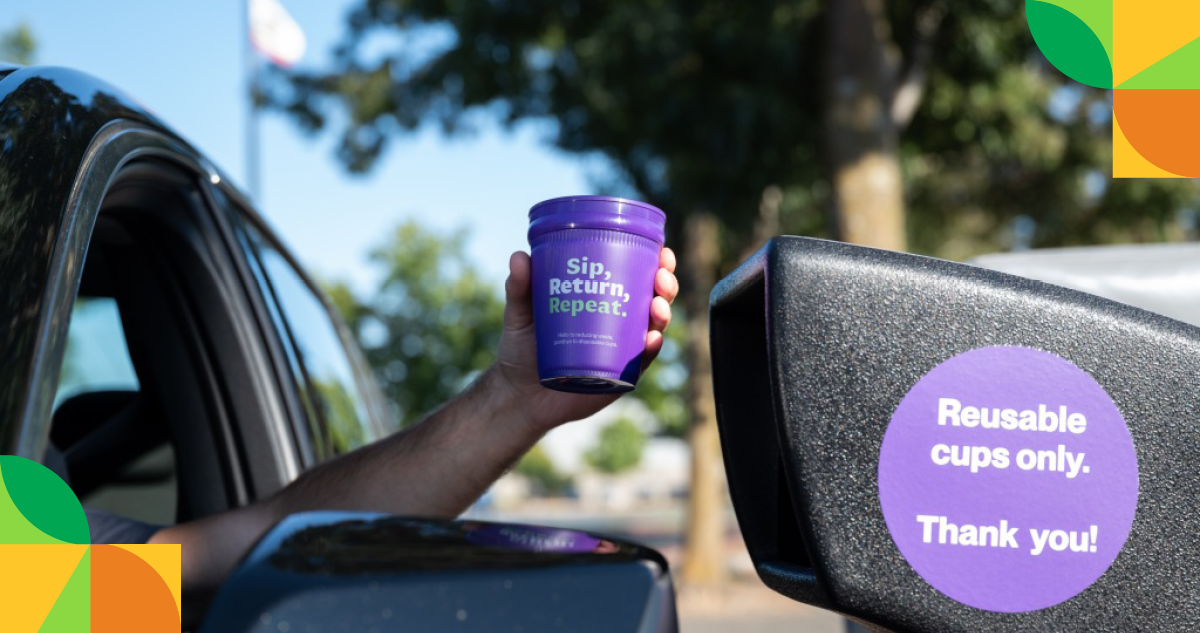
Packaging
PepsiCo's sustainable packaging approach is grounded in a vision to create a world where packaging never becomes waste. Sustainably managing our packaging requires comprehensive solutions, many of which are complex and hinge on significant systemic transformations such as improved infrastructure, policy or consumer engagement.
Packaging plays an essential role in safely delivering our foods and drinks to customers and consumers. We believe long-term transformation requires agility to identify what’s working, what isn’t, and adjust our approach to focus on areas where we can have the greatest impact.
We aim to design our primary packaging to comply with food safety regulations while maintaining the freshness and quality of our foods and drinks and carefully considering consumer preferences, environmental sustainability and consumer convenience.
Our packaging goals — refined in 2025 — include targets for primary and secondary packaging materials and focus on key markets where we believe our efforts can make the most positive impact and better account for external factors outside of the company’s control. By prioritizing efforts in these key markets and continuing work to reduce our use of virgin plastic,1 increase incorporation of recycled content1 and improve the design of our packaging,2 PepsiCo plans to focus on investments that aim to improve the packaging lifecycle.
Our goals remain ambitious and will continue to require investment, innovation and cross-sector collaboration to drive systemic change and support the business. At the same time, challenges remain. For example, India only passed laws allowing rPET for beverage packaging in 2023, with food packaging added this year. Well-designed collection and recycling policies, such as Extended Producer Responsibility (EPR) programs, are still lacking in many parts of the world.
No one company or industry can create a circular economy on its own. Advancing the sustainability and circularity of our packaging requires comprehensive systems solutions, many of which are complex and hinge on significant systemic transformations such as infrastructure, policy, and consumer engagement. We are working with our stakeholders, including governments, NGOs, suppliers, customers, peer companies, consumers and more, to find scalable solutions. To achieve these transformations, multi-stakeholder collaboration and action-oriented partnerships across key points along the packaging value chain are needed.
We believe this will not only help us, but also further help build a circular economy for packaging that benefits us all.
Among a number of ways that PepsiCo is lending its voice to influence the necessary systems change is our engagement as a member of the Business Coalition for a Global Plastics Treaty. Through the coalition we advocate for an ambitious UN global agreement to end plastic pollution. We believe a global treaty that creates a common framework with legally binding rules for national action has potential to spur significant progress toward a more circular economy for packaging.
PepsiCo supports action across the value chain in the areas of reduction, circulation and waste prevention. More specifically, we believe the treaty could deliver benefits through aligned definitions and metrics, agreement on measures to improve packaging design and improved waste management systems, including smart EPR policies based on industry aligned principles, among other provisions.
1. Goal tracks primary plastic packaging in PepsiCo's key packaging markets. This scope represents more than 80% of PepsiCo's 2024 global plastic packaging footprint (by weight)
2. Goal tracks primary and secondary packaging in PepsiCo's key packaging markets. This scope represents more than 85% of PepsiCo's 2024 global packaging footprint (by weight). Reusable packaging must also be designed to be recyclable or compostable
Approach
Our sustainable packaging vision
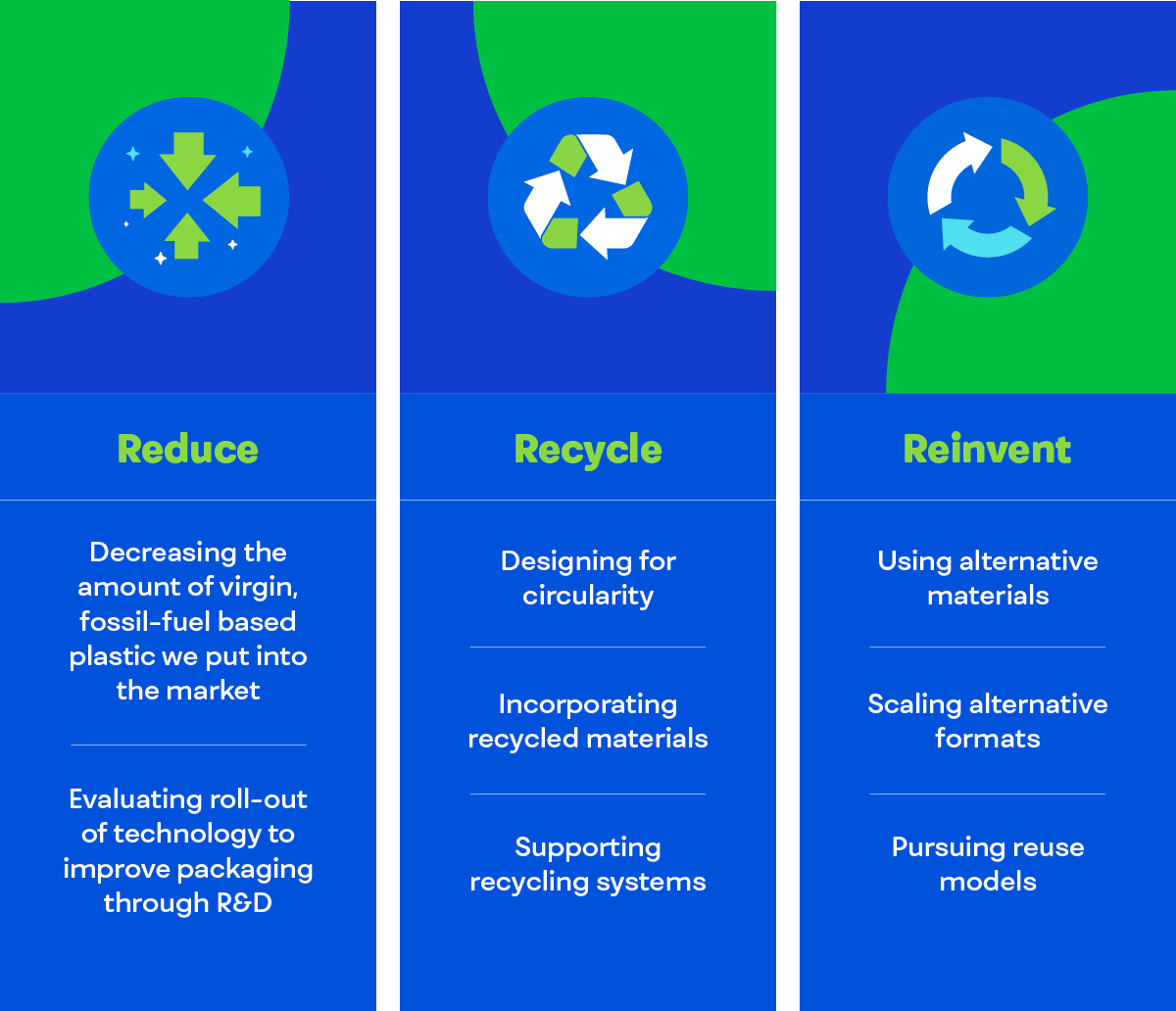
Reduce (Use less packaging)
Reducing plastic packaging supports both our packaging and climate ambitions by decreasing the amount of virgin, fossil-fuel based plastic we put on the market. Transitioning away from virgin plastic decreases the GHG emissions that would otherwise be generated from our production.
To reduce plastics across primary packaging, we have made progress in reducing the weight of our bottles and other packaging materials. Our R&D teams continue to explore and roll out technology to improve food packaging, including pre-settling food in order to use a smaller bag for the same amount of product and introducing new packaging materials.
Recycle (Support a circular economy for plastic)
Our approach to supporting a circular economy includes emphasis on designing for circularity; incorporating recycled materials; and supporting recycling systems.
While we work to phase out materials that are challenging in the recycling process, such as non-recyclable labels, we continue searching for solutions to improve the recyclability of flexible foods packaging and to increase consumer access to recycling.
Significant changes are needed to address broader recycling infrastructure, particularly to ensure packaging has the right end of life so it can eventually be incorporated into the recycled materials we use. Achieving circularity for certain materials, such as PET and other plastics, is contingent on many external forces, including both demand and supply. We will continue to engage externally and across industries to collaborate on the essential shifts needed to support this transformation.
We’ve made several changes to our packaging to reduce plastic usage and enhance the recyclability of our foods and drinks. We advanced progress toward our goal of achieving 97% or greater reusable, recyclable, or compostable (RRC) packaging by design by 2030 in our primary and secondary packaging in our key packaging markets, with 93% of primary & secondary packaging in key packaging markets designed to be reusable, recyclable or compostable (RRC) in 2024.1 We continued work to design RRC packaging in different markets during 2024, including by:
- Changing the color of Mountain Dew® bottles in Pakistan from dark green to light green in line with local recycling standards;
- Moving from whole-bottle shrink labels to partial-bottle wrap labels for Pepsi® Black in China; and
- Transitioning to paper packaging for Snack A Jacks® multipacks in the U.K. The new outer bag can be widely collected for curbside recycling collection.
- Introducing the first 100% rPET carbonated beverage bottle in Taiwan with 7UP®; and
- Introducing the first energy drink in India with an rPET bottle for Sting®.
We have also prioritized investments in sustainable packaging solutions and alliances across the value chain. To help meet our recycled content ambitions, we work with a variety of stakeholders to drive improvements to collection and recycling systems. In 2024, we continued to invest in infrastructure that will provide greater accessibility to consumers who wish to recycle through collaborations and engagements including:
- Continuation of Journey to Zero Waste, a voluntary EPR program in Thailand for the collection and recycling of flexible packaging; in 2024, the program collected over 9,000 kg of multilayered packaging that was upcycled into school desks and chairs.
- We announced a new collaboration with Intuitive AI to offer the Oscar Sort AI recycling and sortation system in high-traffic areas across the U.S. Oscar Sort has been deployed at several PepsiCo office locations and will be launched at select customer locations in the coming months, including locations like universities, airports, malls and stadiums. Oscar Sort identifies materials and guides users to the correct bin to aid in proper disposal, improving overall recycling accuracy.
- We continued our work with the Fair Circularity Initiative (FCI) — launched in 2022 — where we work with peers and NGOs to support a set of principles to guide corporate engagement with the informal waste sector and work towards a fairer circular economy. Internally, a cross-functional group is developing a holistic strategy to implement these principles through internal guidance, on the ground projects and multi-stakeholder partnerships.
- The Purna Project, funded by PepsiCo India, focuses on efforts to improve ownership of waste, recognition and dignity as well as health and hygiene of the waste pickers, professional benefits and growth and entrepreneurship opportunities.
Reinvent (improve the packaging and materials that we use)
PepsiCo’s reinvention efforts focus on improving the environmental impact of our packaging by developing and supporting packaging innovations and new technologies. This work includes using alternative materials; scaling alternative formats; and pursuing reuse models. One example from 2024 is with Quaker® cereals in Brazil: Within our convenient foods business, we are implementing new technology to change the way we package our foods. In 2024, we reduced the plastic used in packages for Quaker® cereals in Brazil by switching the pouches from plastic to paper.
Reuse models used in our beverages business include, but are not limited to, SodaStream®, fountain beverages delivered in reusable containers and returnable glass and plastic bottles sold to customers. For example, In 2024, we launched Gatorade® glass bottles in Guatemala.
We’re continuing to reinvent our offerings to deliver high-quality drinks through reusable formats. These models aim to help us decouple business growth from virgin plastic use and, over time, decrease GHG emissions. Informed by the Ellen MacArthur Foundation’s reuse framework, we are pursuing multiple approaches to scale reuse, including:
- Expanding SodaStream®;
- Building out our returnable plastic and glass bottle offerings in collaboration with customers and PepsiCo bottlers; and
- Driving adoption of reusable cups for our fountain drinks.
Reuse
When we announced our updated packaging goals in May 2025, we sunset our reuse goal while continuing to track reusability as part of our refined RRC goal. Reuse remains core to our packaging approach and our partner engagements to identify reuse solutions within the value chain and advocate for smart policies. Examples include:
- Our continued engagement with the NextGen Consortium. The multi-year industry collaboration with Closed Loop Partners works to reimagine away-from-home packaging including accelerating learnings and action on reusable cups. Together, we are striving to develop reuse and refill models that will inspire consumers and drive reuse growth.
- In 2024, we joined forces with Starbucks®, The Coca-Cola Company and other major brands to launch the Petaluma Reusable Cup Project, an initiative led by the NextGen Consortium that aims to make reuse a norm across an entire U.S. city. In total, eight Pepsi© customers served as both a cup outlet and/or return location. In addition to collecting over 200,000 cups for reuse, the pilot program provided key insights into what may be required to improve collection and consumer participation in future reuse initiatives.
We know that transforming the traditional beverage consumption model will require a holistic approach on the part of industry, consumers, retailers and government. While this starts with making reuse and refill options accessible and convenient at scale for consumers, industry efforts are only one piece of a complex puzzle — we will need all parties to take action.
We regularly engage with policymakers and stakeholders throughout the value chain with the goal of a broad definition of reuse models being adopted and incentivized to scale, as we have been doing during the policy process leading to the finalization of the European Union’s Packaging and Packaging Waste Directive (PPWR). We’re actively engaged with industry platforms such as Ellen MacArthur Foundation and the World Economic Forum’s Consumers Beyond Waste to scale reuse models.
We know working toward more sustainable packaging solutions is a complex endeavor, one that will require collaboration from federal, state and local governments, the private sector and NGOs. This, coupled with an effective and well-designed policy framework, will help us progress toward a more circular economy. PepsiCo is supportive of global action and aims to be part of the solution.
For our primary plastic packaging in key packaging markets:

5%
reduction in our absolute tonnage of virgin
plastics achieved between 2023 and 20241

15%
recycled plastic
used in 20241
1. Refined goal announced on May 22, 2025. 2024 performance calculated retroactively. For more information, see Calculation Methodology
Goals & progress
By prioritizing efforts in these key markets, continuing work to reduce our use of virgin plastic and improve the design of our packaging and sunsetting our stand-alone reuse goal, PepsiCo plans to focus on investments that aim to improve the packaging lifecycle.
While challenges, including those related to infrastructure and technological advancements, persist, our goals remain ambitious, and progress will continue to require investment, innovation and cross-sector collaboration to drive systemic change.
Virgin plastic reduction (tonnage) goal
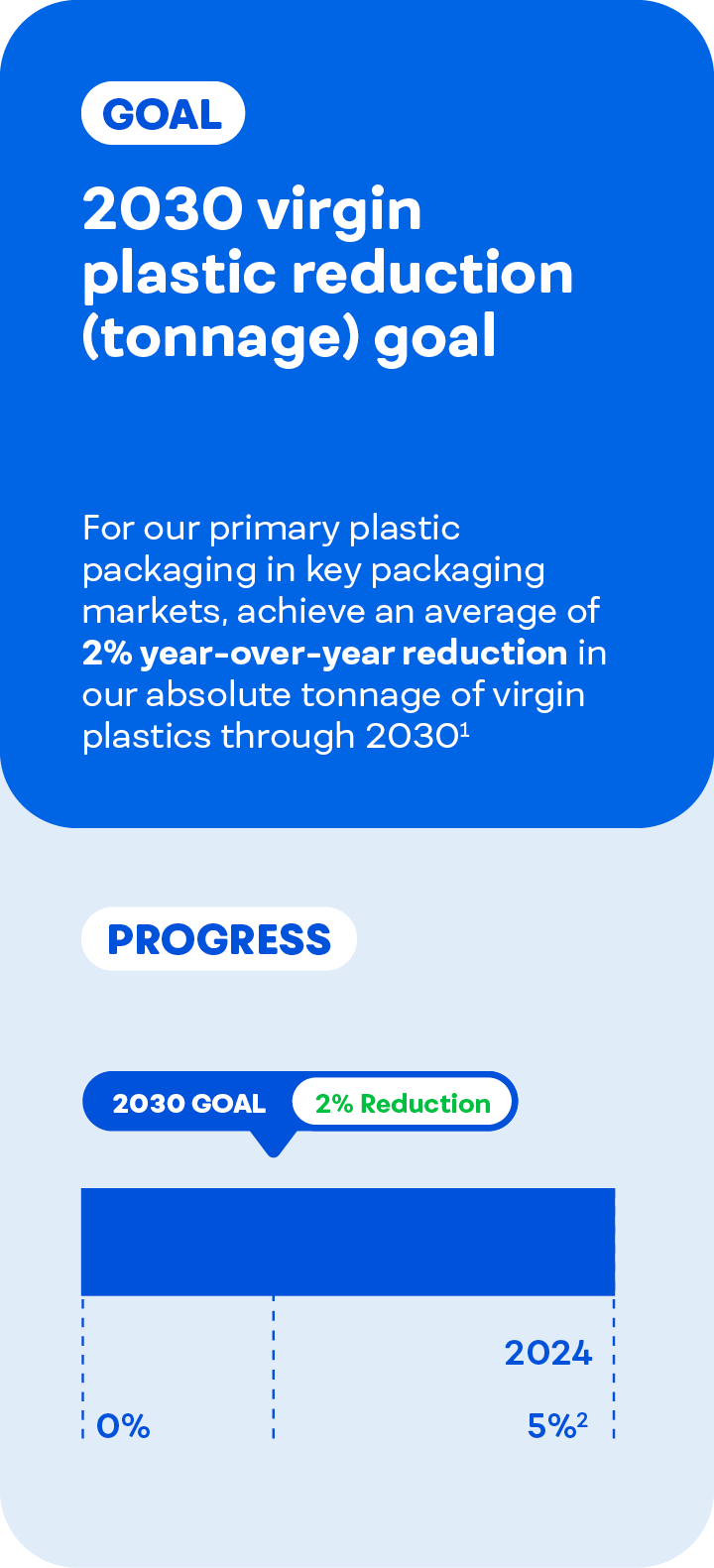
Recycled content goal
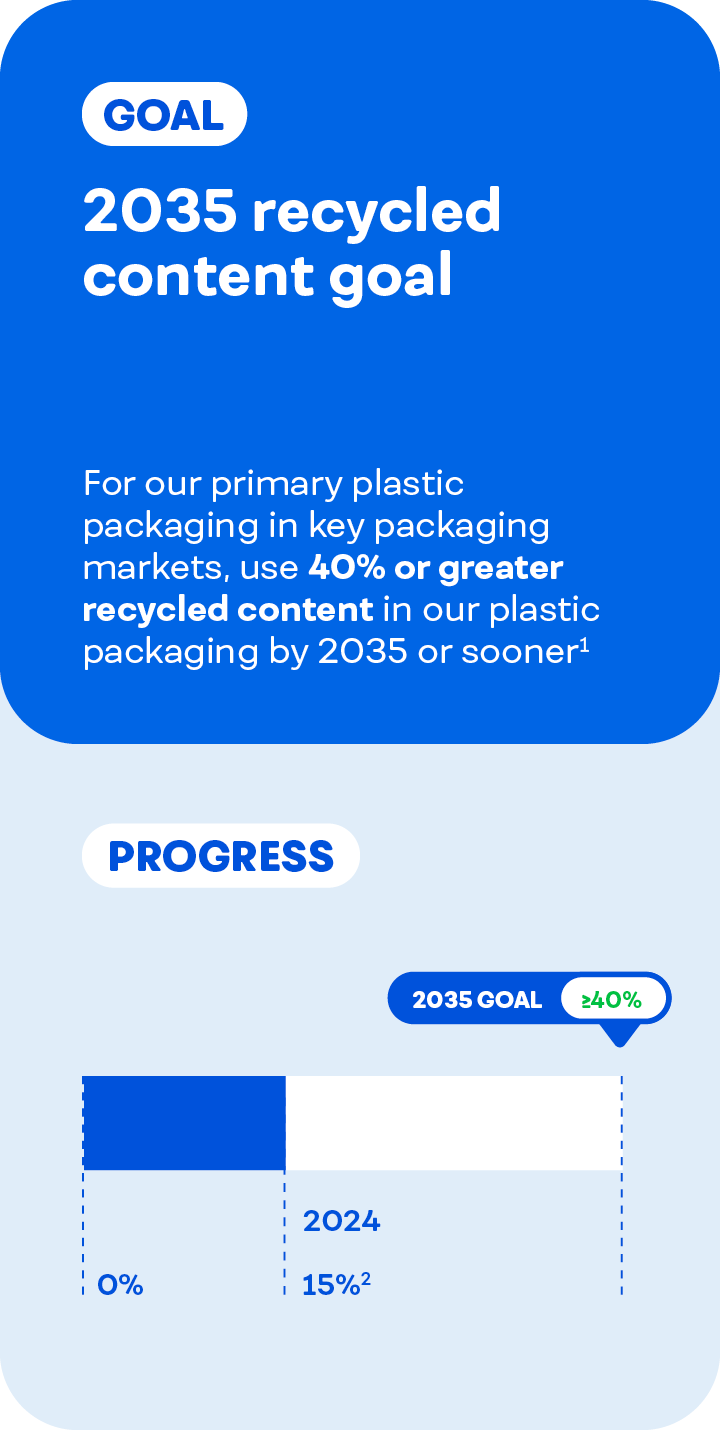
Reusable, recyclable or compostable (RRC) goal
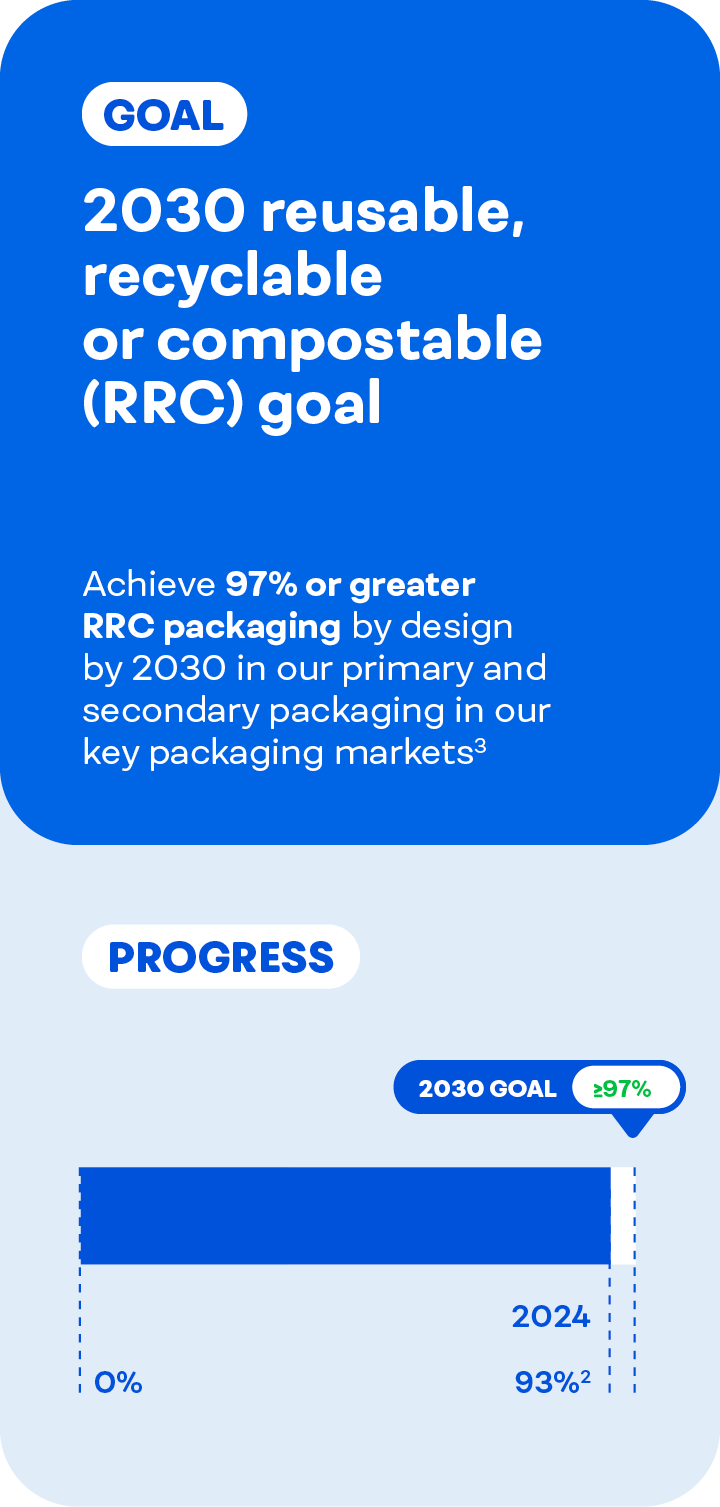
Innovative packaging materials

Recycling rates

1. Goal tracks primary plastic packaging in PepsiCo’s key packaging markets. This scope represents more than 80% of PepsiCo’s 2024 global plastic packaging footprint (by weight)
2. Refined goal announced on May 22, 2025. 2024 performance calculated retroactively. For more information, see Calculation Methodology
3. Goal tracks primary and secondary packaging in PepsiCo’s key packaging markets. This scope represents more than 85% of PepsiCo’s 2024 global packaging footprint (by weight). Reusable packaging must also be designed to be recyclable or compostable
Explore Packaging topics in more depth
PepsiCo's ESG Topics A-Z provides detail on strategy, data, policy, progress and more on a wide range of subjects.
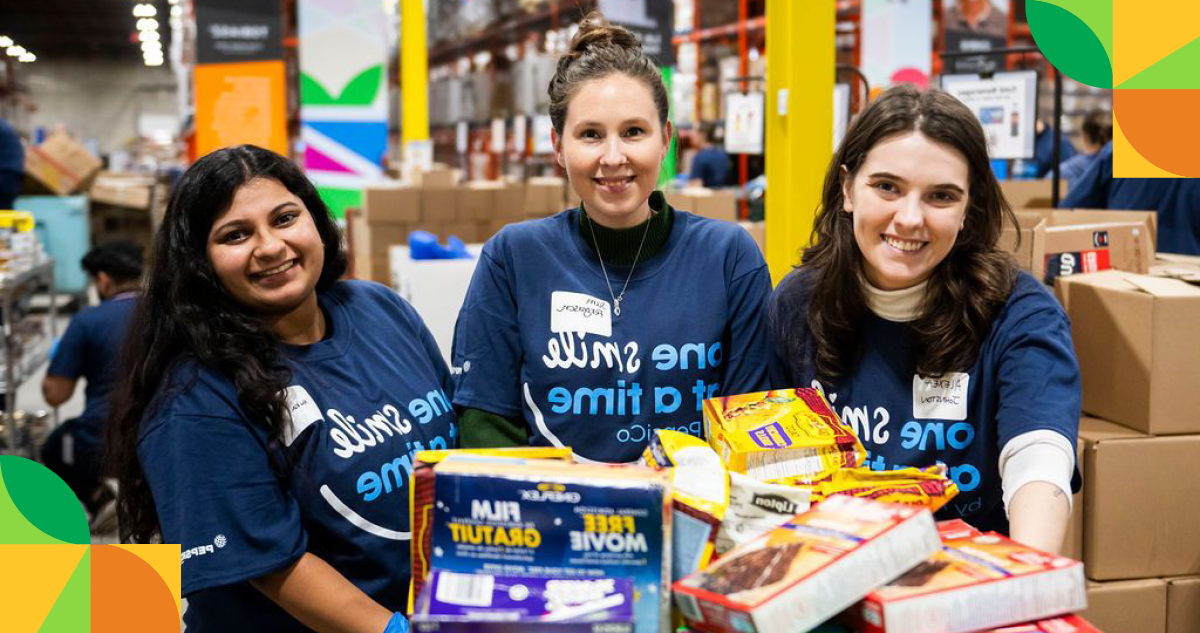
People
As a global convenient foods and drinks leader, we strive to use our reach to champion responsible business practices. This means aspiring to positively influence our business partners and communities and championing our employees’ well-being.
Prioritizing people and their experiences is critical to the overall success of our business. We are actively working to foster an engaging workplace culture; support the inclusivity of our teams; and, where possible, aim to reduce barriers to equality in our supply chains and throughout the communities where we operate.
Approach, goals & progress
We focus on providing meaningful job and growth opportunities so our people are better positioned to make positive impacts at work, at home and in their local communities.
Approach to job and volunteer growth opportunities
In 2024, over 16,000 employees around the globe volunteered over 169,000 hours through One Smile at a Time, our internal global volunteering program. Volunteers contributed their time on issues important to our employees, their communities and the company, including water access, food security and economic empowerment.
Programmatic highlights that contributed to our pep+ employee volunteering goal in 2024 included:
- Nearly 1,100 employees volunteered and packed more than 200,000 meals and food packages which were donated to local food banks and feeding programs through a series of PepsiCo Foundation Holiday Hunger meal packing events across 13 countries, in partnership with local nonprofit organizations.
Job growth & career advancement goal

Volunteer growth goal

Engaging our Employees
We’re also incentivizing employee participation in our sustainability journey by adding pep+ as a category to our internal awards program, Smiles, which encourages employees to recognize one another for taking actions to support pep+. We continue to expand our Green Teams, a grassroots network that helps employees become more sustainable at work, at home and in their communities. Currently, we have nearly 300 Green Teams globally. In 2024, Green Teams around the world held initiatives ranging from tree plantings to expanding EV charging on campuses to sustainability-focused workshops.
We further encourage PepsiCo employees to engage on sustainability through sustainability trainings and educational courses ranging from climate basics to technical trainings via PEP U.
We also provide opportunities for employees to learn, grow and engage at work. Across the globe, our employees spent over 1.8 million hours learning through our digital platforms in 2024, including:
- PEP U Degreed is an online, self-service platform that leverages artificial intelligence and machine learning to suggest personalized resources based on skill level, interests, colleague connections and learning habits. In 2024, we expanded the reach of PEP U Degreed to include courses on data and analytics, cloud computing, A.I., automation, software development and project management.
- myEducation offers learning opportunities for many U.S. employees through tuition reimbursement and access to 80+ fully funded, flexible upskilling programs from highly reputable schools and universities. Based on internal data, participants in those programs are nearly two times more likely to advance in their careers.
- myDevelopment, PepsiCo’s internal talent marketplace, identifies internal opportunities that align with participating employees’ long-term PepsiCo career paths, considering their skills, interests and goals. In 2024, over 600 projects were created in the marketplace and over 550 employees were assigned to and took part in short-term projects or new opportunities.
Approach to driving inclusion
We aim to create an inclusive workplace with meaningful opportunities that will attract and retain the best talent in a competitive landscape.
Our Inclusion for Growth strategy is structured around three pillars:
People: Continuing to attract and retain top talent, providing associates with the opportunities to succeed and striving to create a culture of inclusion where excellence and contribution drive success.
Business: Building a global workforce and supplier ecosystem that strengthens our ability to compete by leveraging diverse perspectives for innovation, gaining deeper consumer insights in markets around the world and delivering excellence in all areas.
Community: Deepening our impact by focusing on meaningful partnerships that drive business growth and opportunity and that strengthen brand trust and our license to operate by fortifying relationships with suppliers, customers, consumers, governments and local organizations.
Across our organization, we’re fostering a collaborative and inclusive culture where our people can bring their full selves to work, our business partners are set up for success and our communities can thrive. Specifically, we’re:
- Creating a space for employees to bring their full selves to work by seeking to understand the various identities of our employees. In 2023, we expanded our Global Self ID program so that employees around the world can voluntarily disclose aspects of their identity, as permitted by applicable law, such as their display name, pronouns, sexual orientation or gender identity, disability status or if they are a caregiver of an individual with a disability. In the U.S., employees can also disclose their military, veteran or military spouse status. By providing these options, we’re able to better respond to our employees’ needs with resources and benefits.
- Creating access to economic opportunity through education by leveraging our reach and resources through the PepsiCo Foundation. From 2021 to 2025, more than 4,200 scholarships have been awarded to students across the U.S., helping meet our goal of reaching 4,125 students by 2025.
- Our 2024 internal survey results show that PepsiCo employees feel high levels of pride in working for PepsiCo, are energized by their work and are confident in PepsiCo’s future success. PepsiCo’s Organizational Health Survey Score stood at 78% with employee engagement at 80% and employee commitment at 76%. External benchmarking suggests that our employee engagement remains strong compared with other Fortune 500 peers. By listening to employees through various channels and acting to solve issues raised, we aim to provide the best employment experience possible.
Approach to pay equity
As part of our pep+ ambitions, we are working to achieve and sustain pay equity for our global professional population to help ensure women and men continue to be paid within 1% of each other.
Pay equity goal
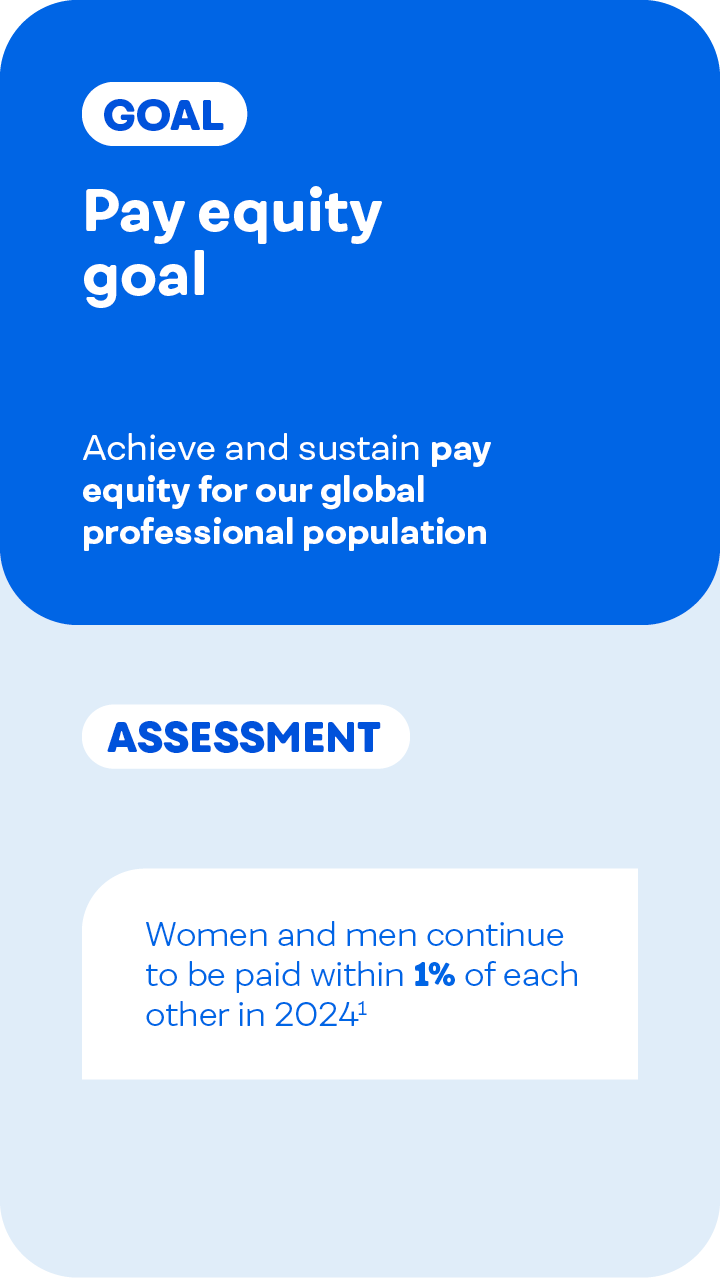
Approach to our Supplier Code of Conduct
While the SCoC applies to suppliers of goods and services, PepsiCo has also set a goal to extend the core principles of our SCoC to our franchisees and joint ventures by the end of 2025. To meet this goal, we continue to reiterate to our franchisees and joint ventures our expectations that they should adhere to the principles outlined in the SCoC and, where possible, continue to update contractual requirements for these parties to help clarify our expectations. We also continue to engage with franchisees and joint ventures on our human rights agenda and priorities.
Approach to human rights
We aim to respect the fundamental human rights of all workers and communities throughout our supply chain. We employ a global management approach, grounded in the UN Guiding Principles on Business and Human Rights, to help proactively prevent, identify and address potential risks across our operations and supply chain.
We focus our strategy on our most salient human rights issues in our direct operations and direct supply chain and strive to ensure that we have the appropriate policies and procedures in place. We also closely monitor emerging risks and regularly review our salient issues to help ensure ongoing implementation of best practices.
Our salient issues include climate change, fair pay and employment conditions, forced labor, freedom of association, human right to water, workplace health and safety and land rights.
Human rights goal

1. A tier-1 supplier is a company that supplies products, goods, or services directly to PepsiCo, Inc.
Approach to striving for an injury-free work environment
All PepsiCo-owned manufacturing facilities are executing our GEHSMS standards. In addition to pursuing GEHSMS standards, 54% of our company-owned manufacturing facilities were certified to the ISO 45001 standard at the end of 2024. In 2024, our Lost Time Incident Rate nearly constant with the prior year, at 0.49 per 200,000 hours worked.
Injury-free work environment goal
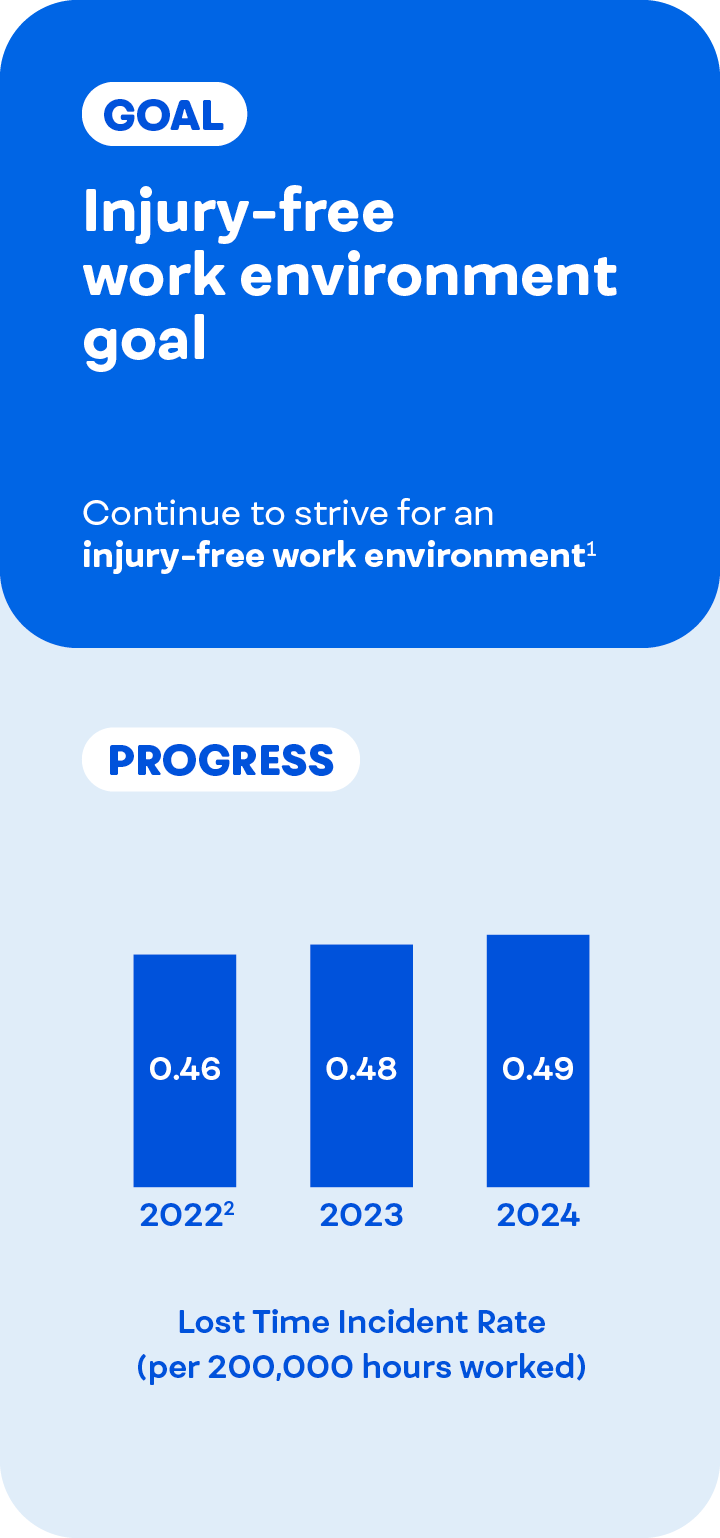
1. Results reflect lost time incidents per 200,000 hours worked
2. 2022 results reflect the exclusion of SodaStream and Be & CheeryApproach to providing safe water access
We believe that all communities should have access to safe water as a fundamental human right to drive health and economic prosperity.
PepsiCo and the PepsiCo Foundation are focused on three paths for delivering safe water access to millions of people in water-risk communities:
- Conservation to increase availability and improve quality of water
- Distribution to improve sanitation services and hygiene training
- Purification through community-based facilities to make water affordable, reliable and safe
Integral to our progress are our partnerships with NGOs including WaterAid, Water.org, Safe Water Network and the National Business Initiative, as well as local organizations that support on-the-ground efforts. Our safe water access projects are primarily implemented in Latin America, Asia and Africa.
Read more about our efforts to expand access to safe water in the PepsiCo Foundation’s Global Impact Report and in the Water ESG Topics A-Z page.
Safe water access goal
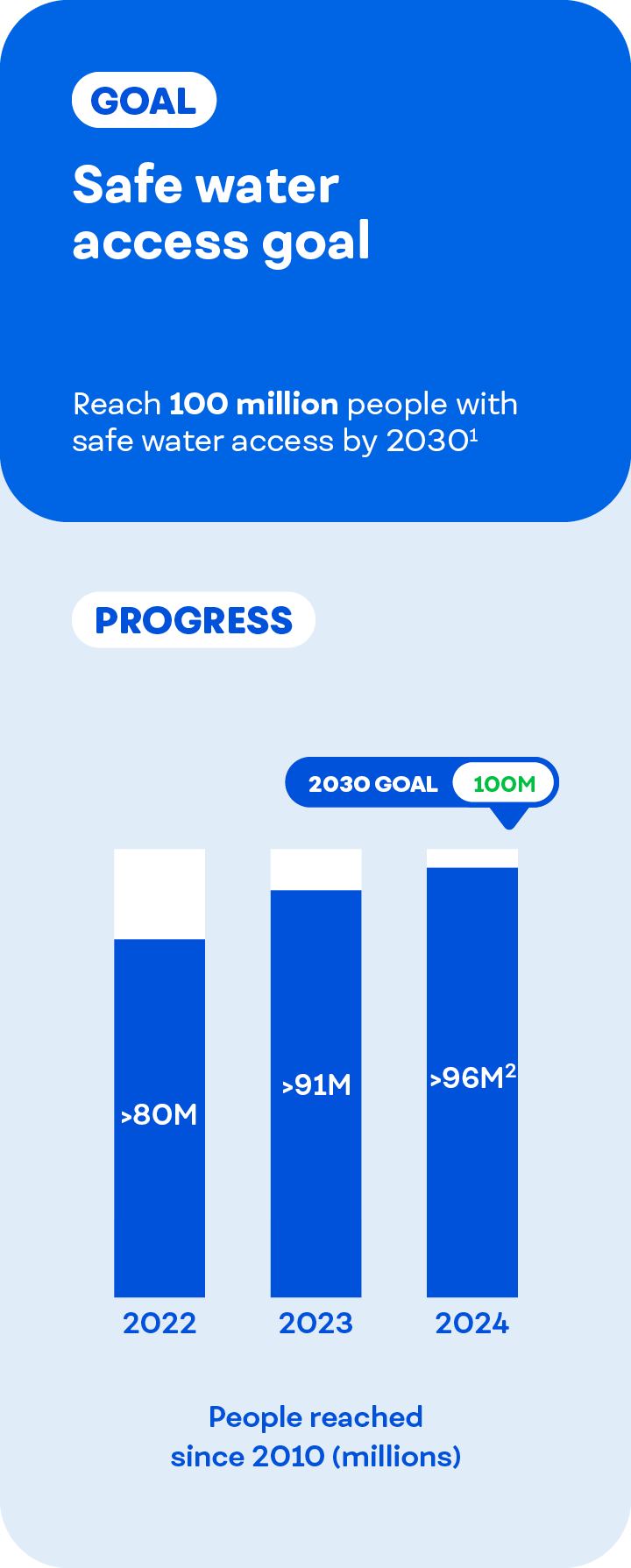
Approach to advancing food security
In recent years, access to nutritious food has become more challenging for many around the globe due to factors like climate change-induced crop failures, conflicts disrupting food supply chains and economic inequalities for vulnerable communities.
Food security has been at the center of our work for decades, and we strive to increase equitable access to nutritious food in the communities where we live and work. Through strategic partnerships and programs with industry peers, local and international nonprofit and public sector organizations and our employees around the world, we help address some of the most pressing challenges surrounding access to food.
One example is our pledge to invest $100 million in sustainable agriculture and other food and nutrition access programs in priority markets by 2030 as part of the Zero Hunger Private Sector Pledge.
Additionally, we are furthering our philanthropic global commitment to advance food security through our flagship programs such as PepsiCo and the PepsiCo Foundation’s Food for Good program. In the U.S., our Food for Good social enterprise has delivered more than 78 million meals since 2009 — of which 2.6 million meals were delivered to over 68,000 children in 2024 alone.
Read more about our efforts to advance food security in the PepsiCo Foundation’s Global Impact Report.
Food security goal
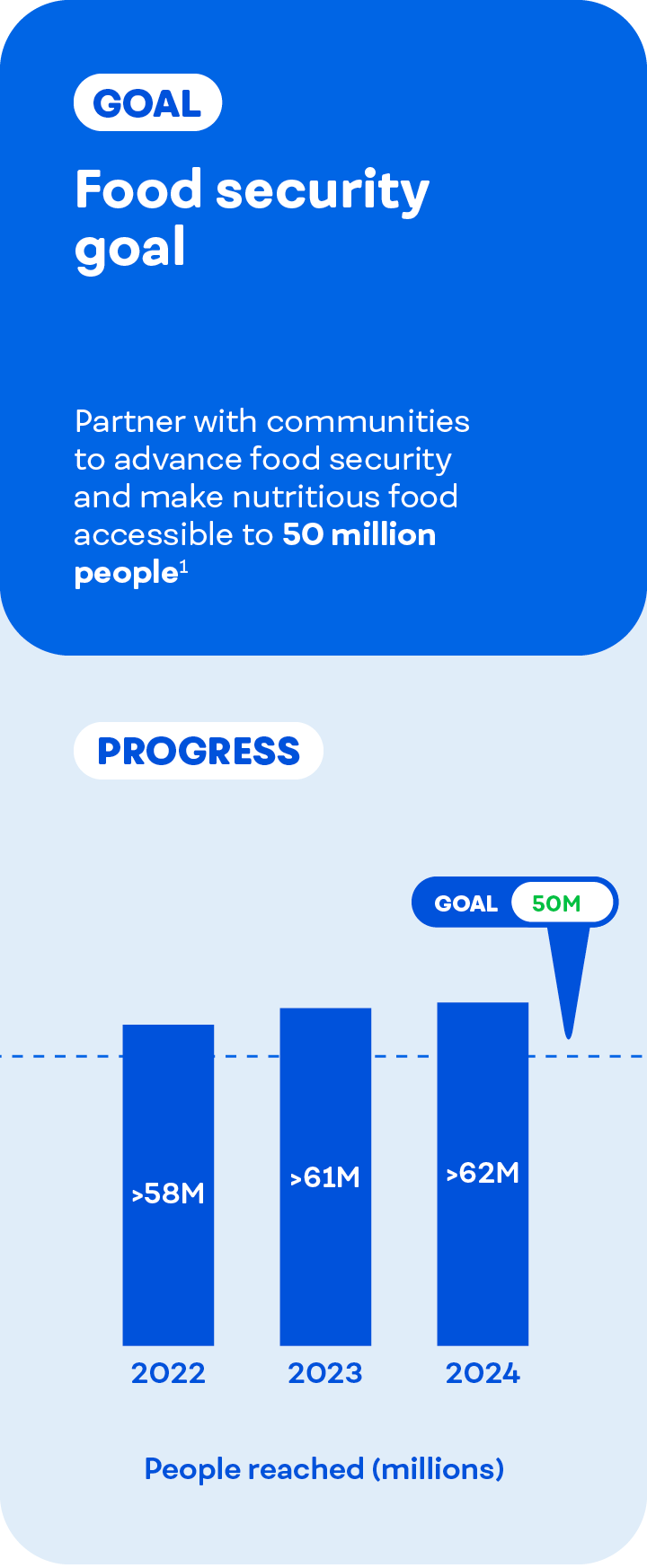
1. Results represent the cumulative sum of people reached with nutritious food per annual reporting period through programs funded through charitable contributions, as well as through commercial efforts that are intended to provide nutritious food. For more information, see Calculation Methodology
Positive Value Chain stories
PepsiCo and Intuitive AI Join Forces to Launch Oscar Sort - AI Recycling Sortation and Education Technology First Being Deployed at High-Traffic PepsiCo Customer Locations Across the U.S.
Our 2024 ESG Performance Metrics
This download contains detailed performance data, tracking progress against our goals.
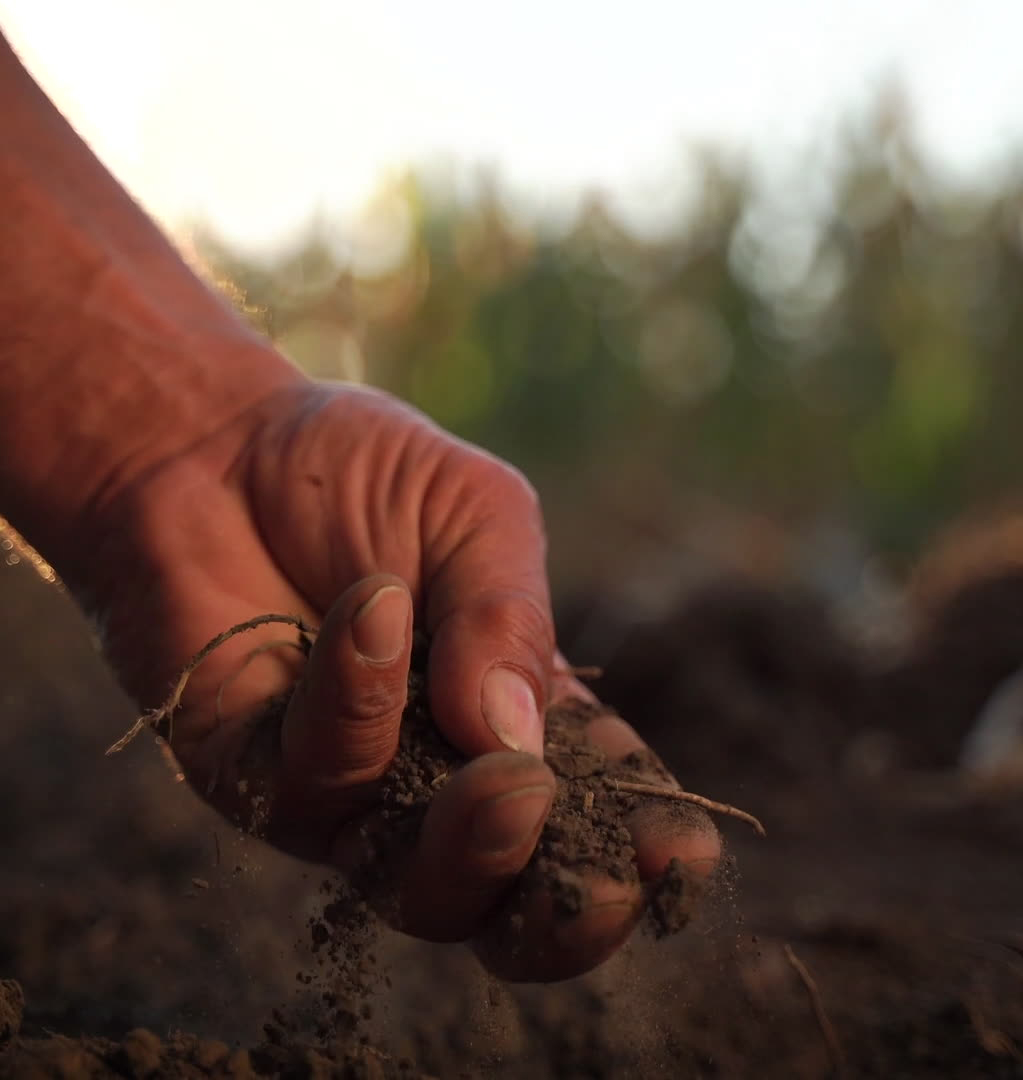
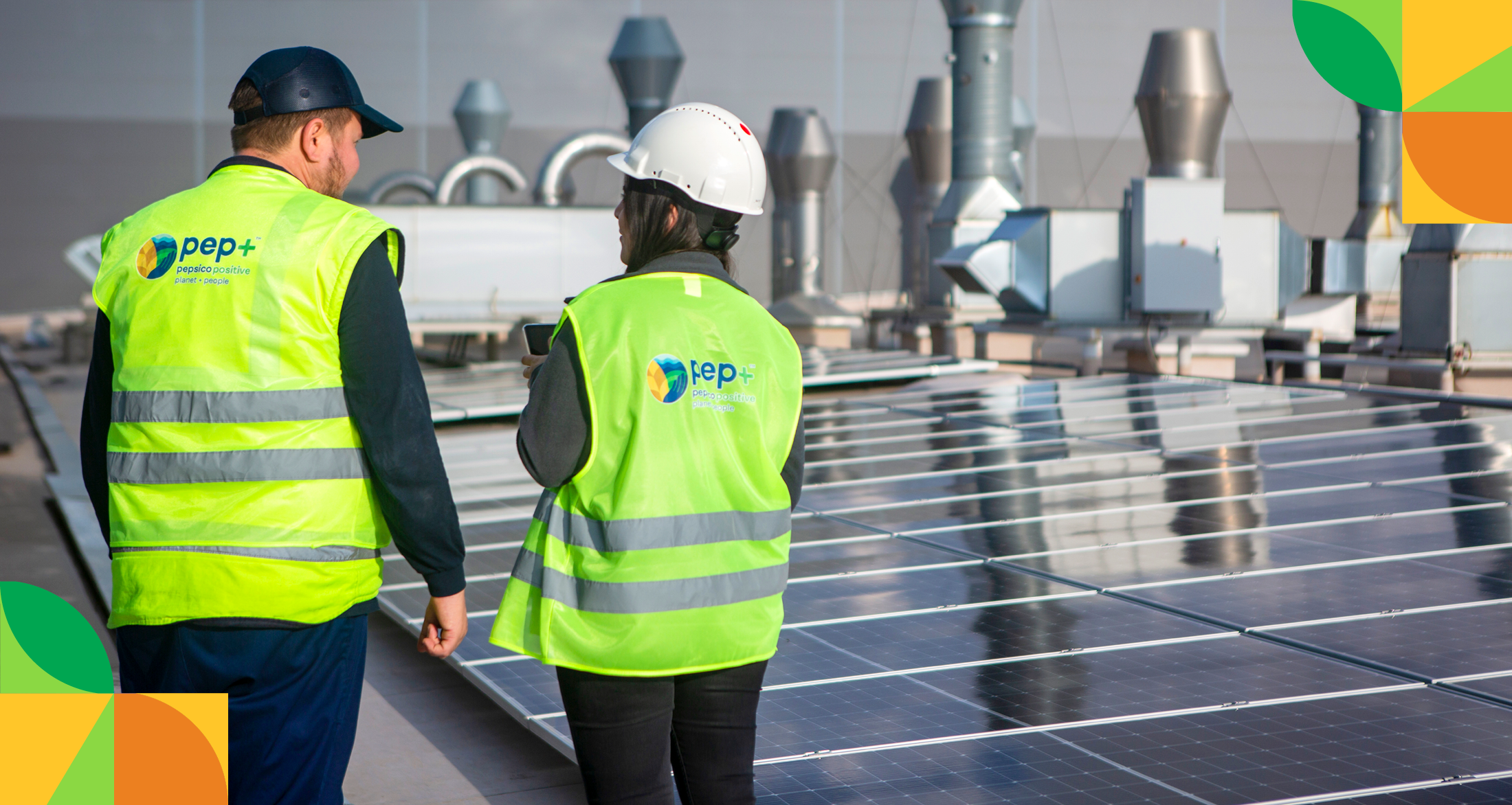

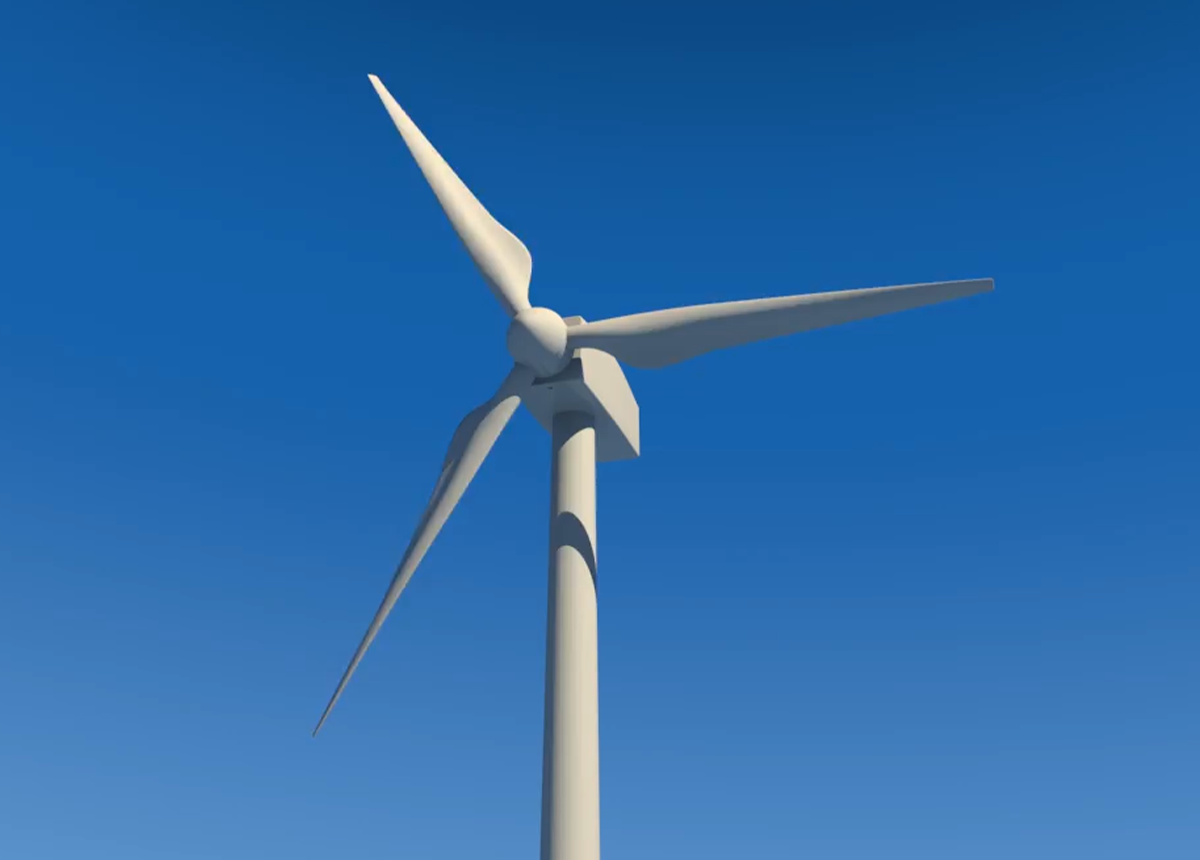
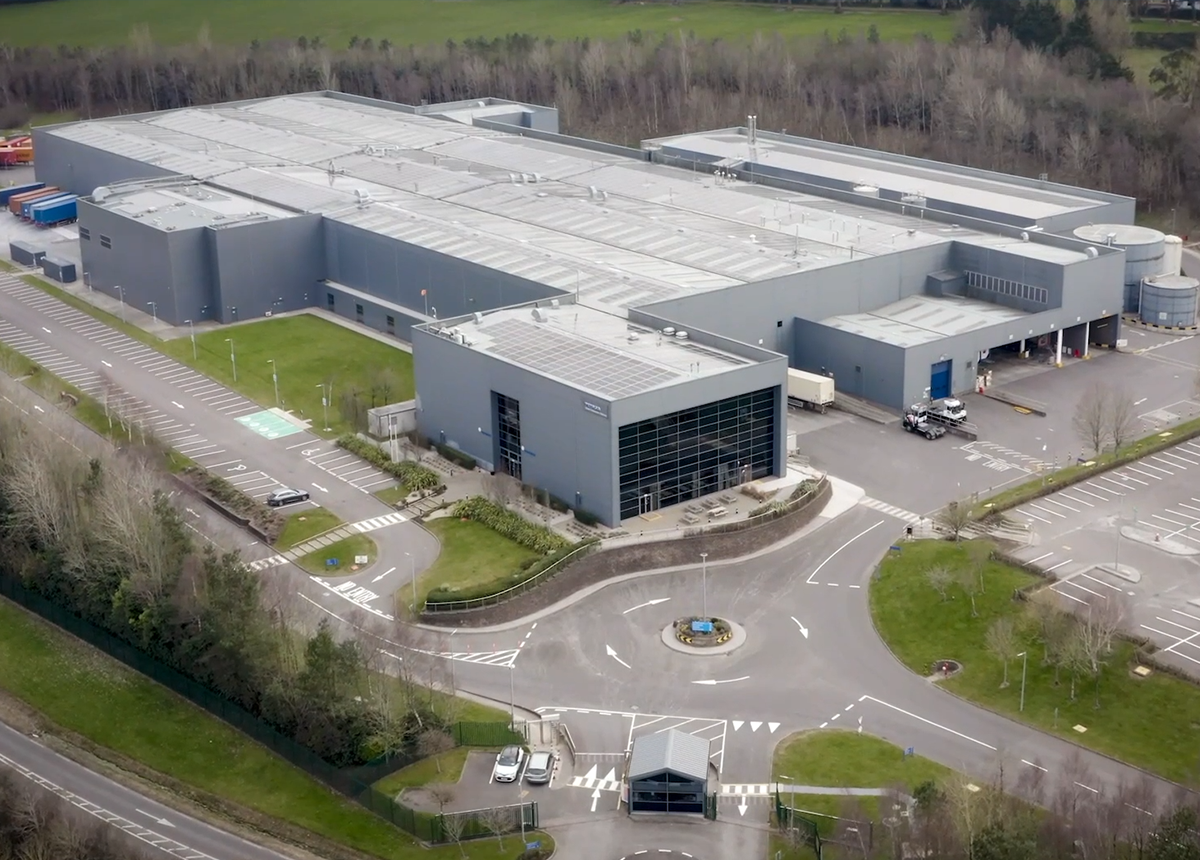
.png?sfvrsn=196820e7_0)
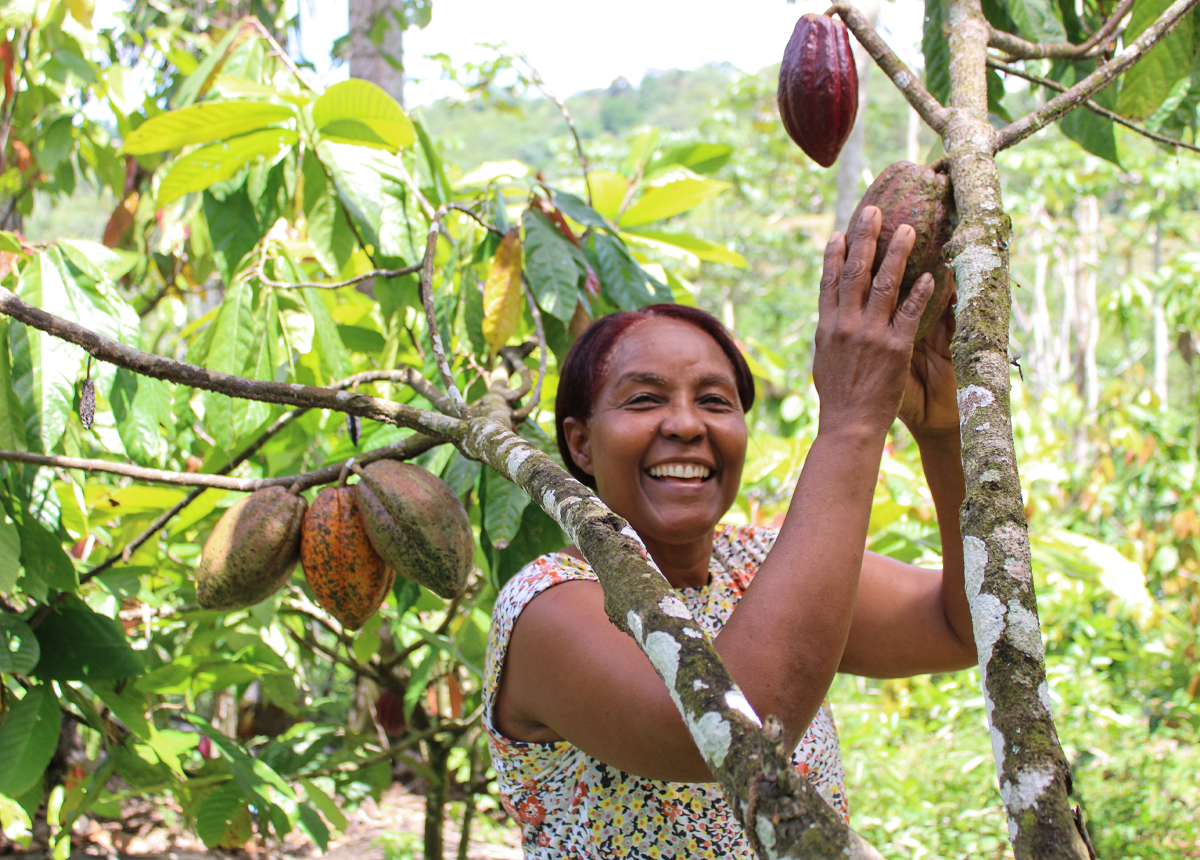
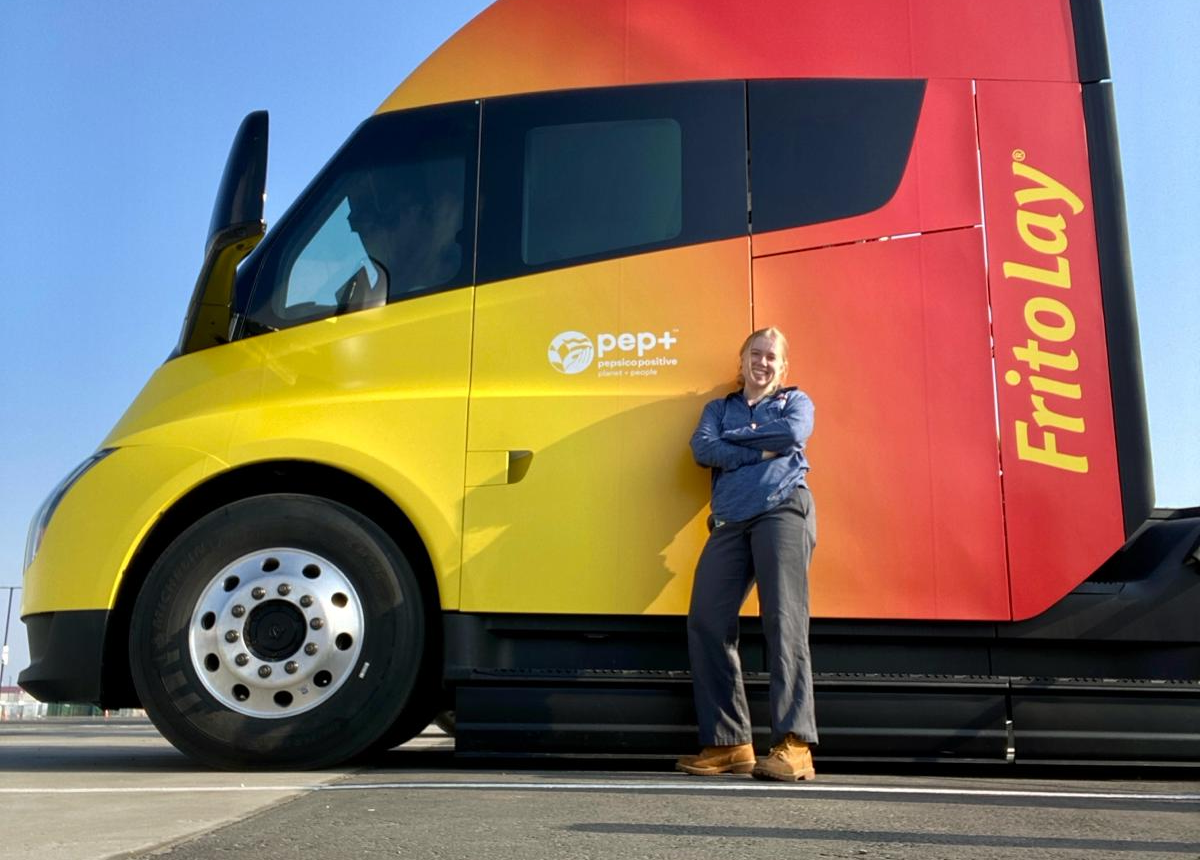

e624b97c397b4a35950ab3a8d5917cc3.png?sfvrsn=6c5ff38a_0)
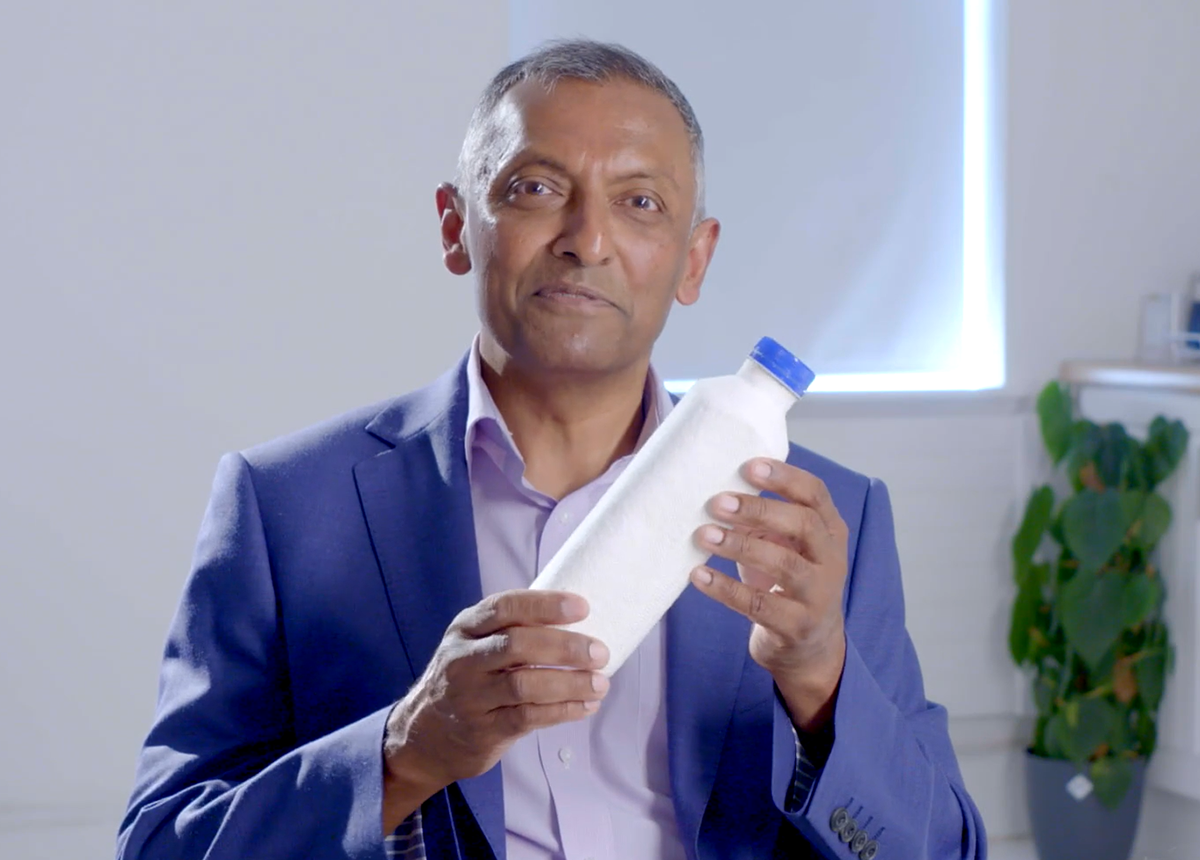
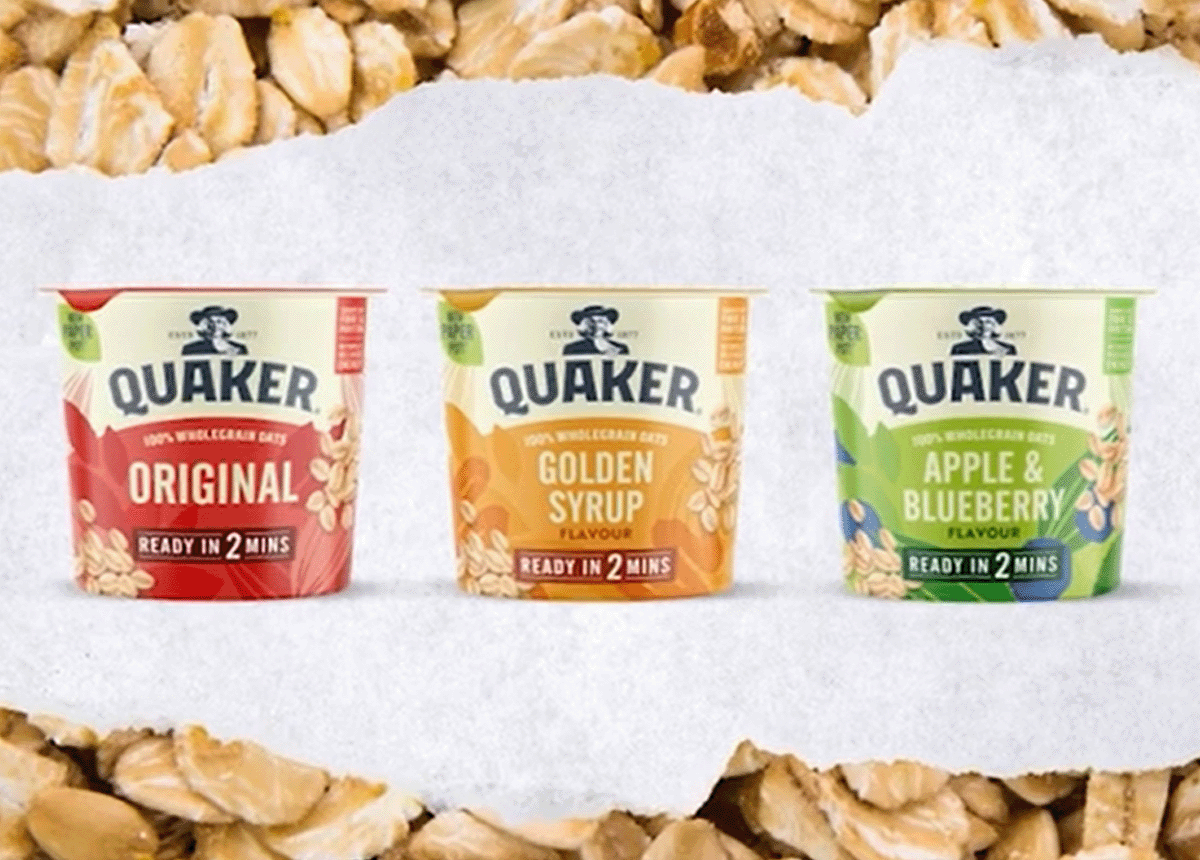
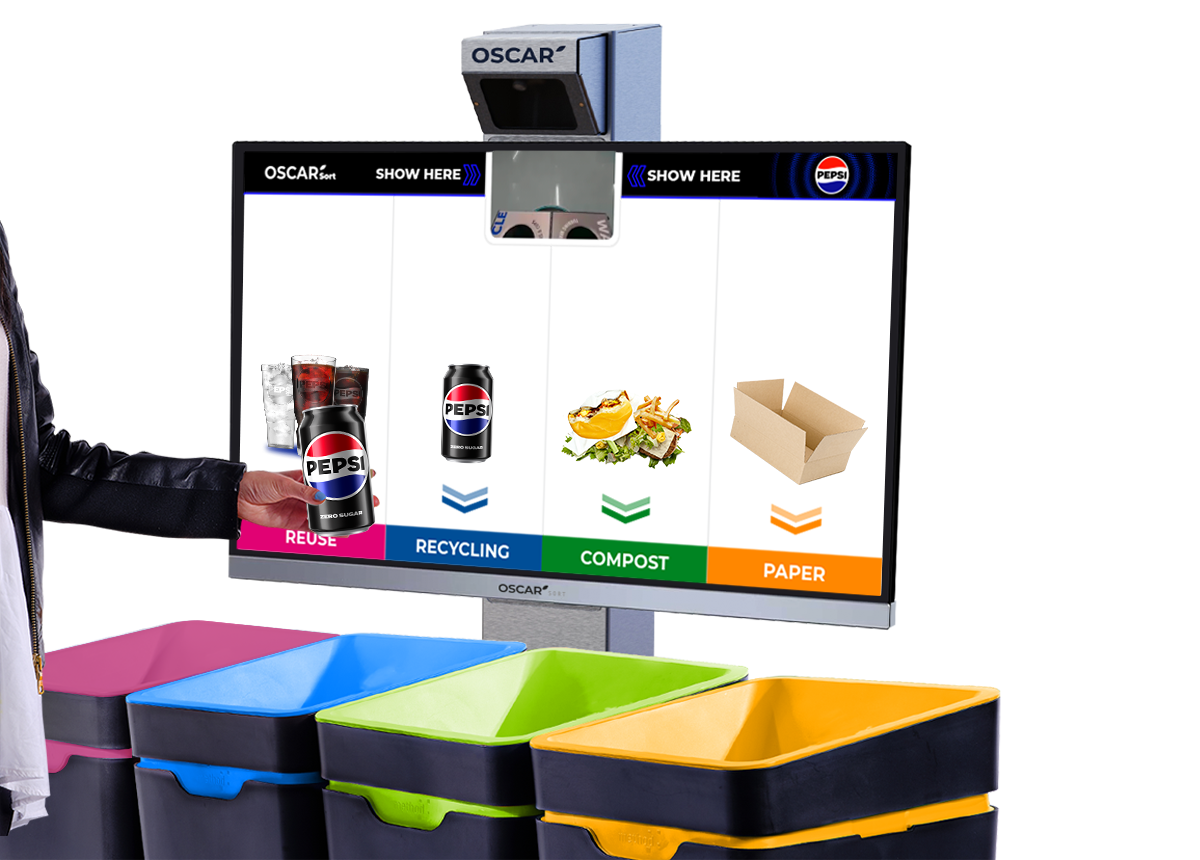
420121cdc23b4935806989053f436f56.png?sfvrsn=93a68ae_0)
